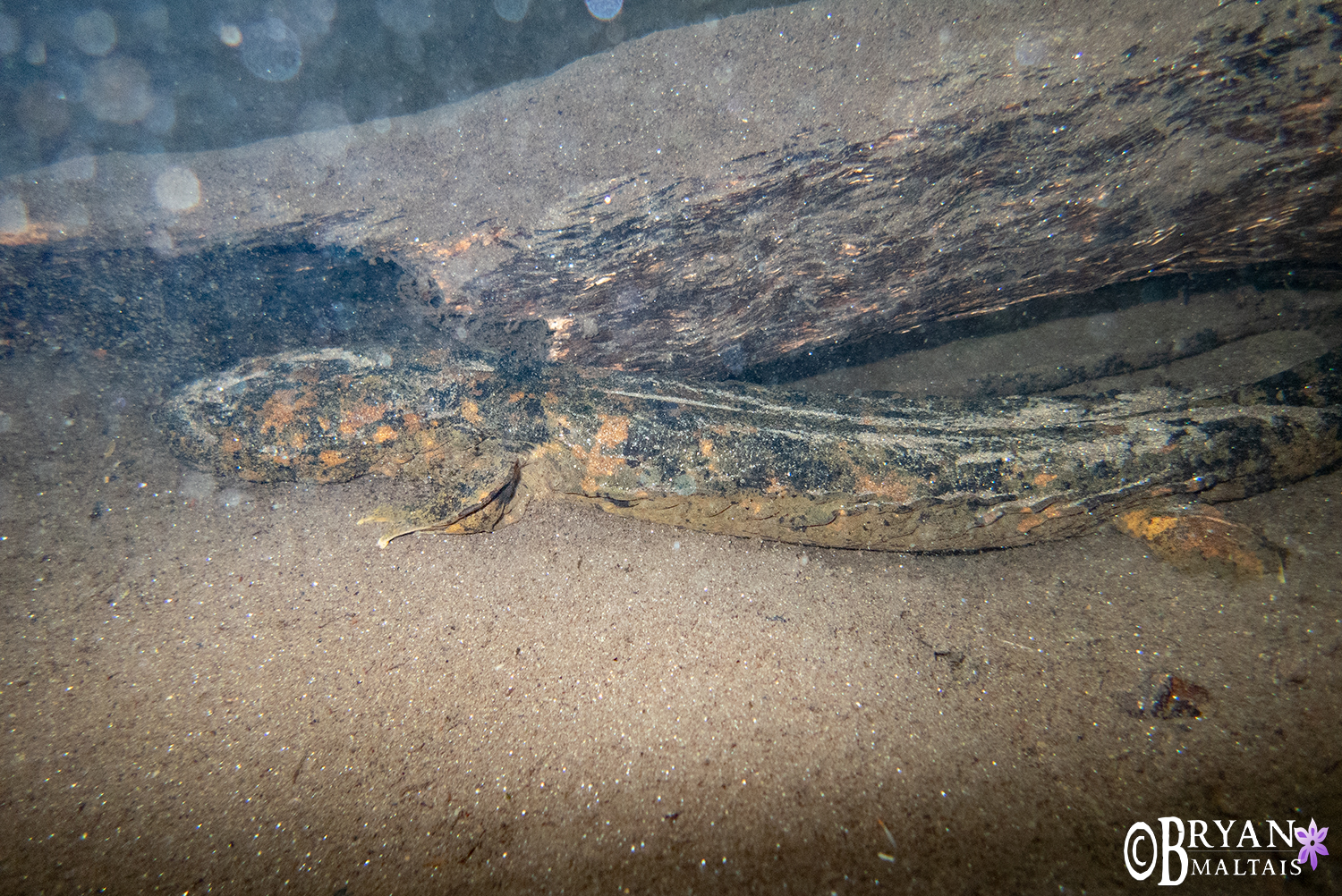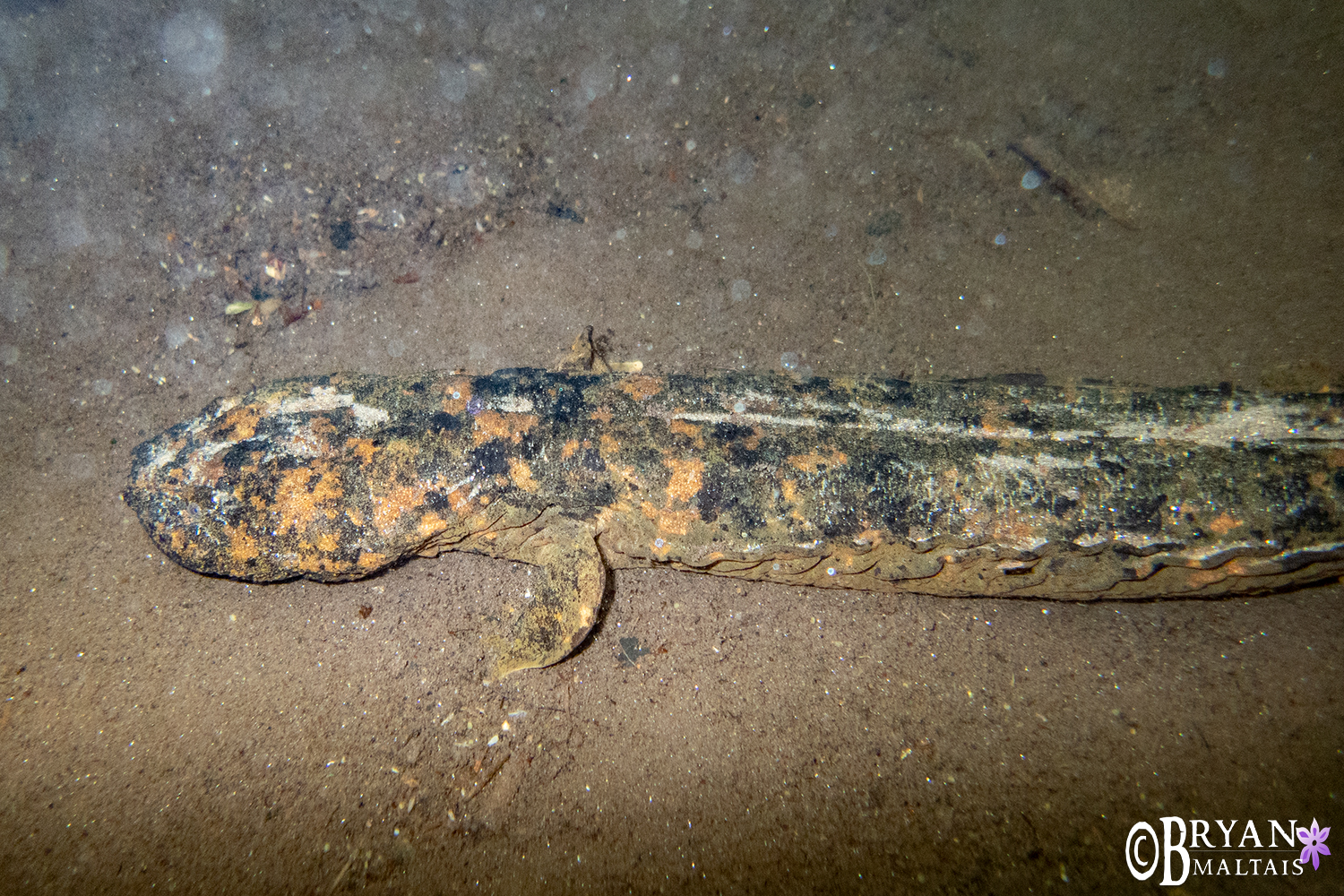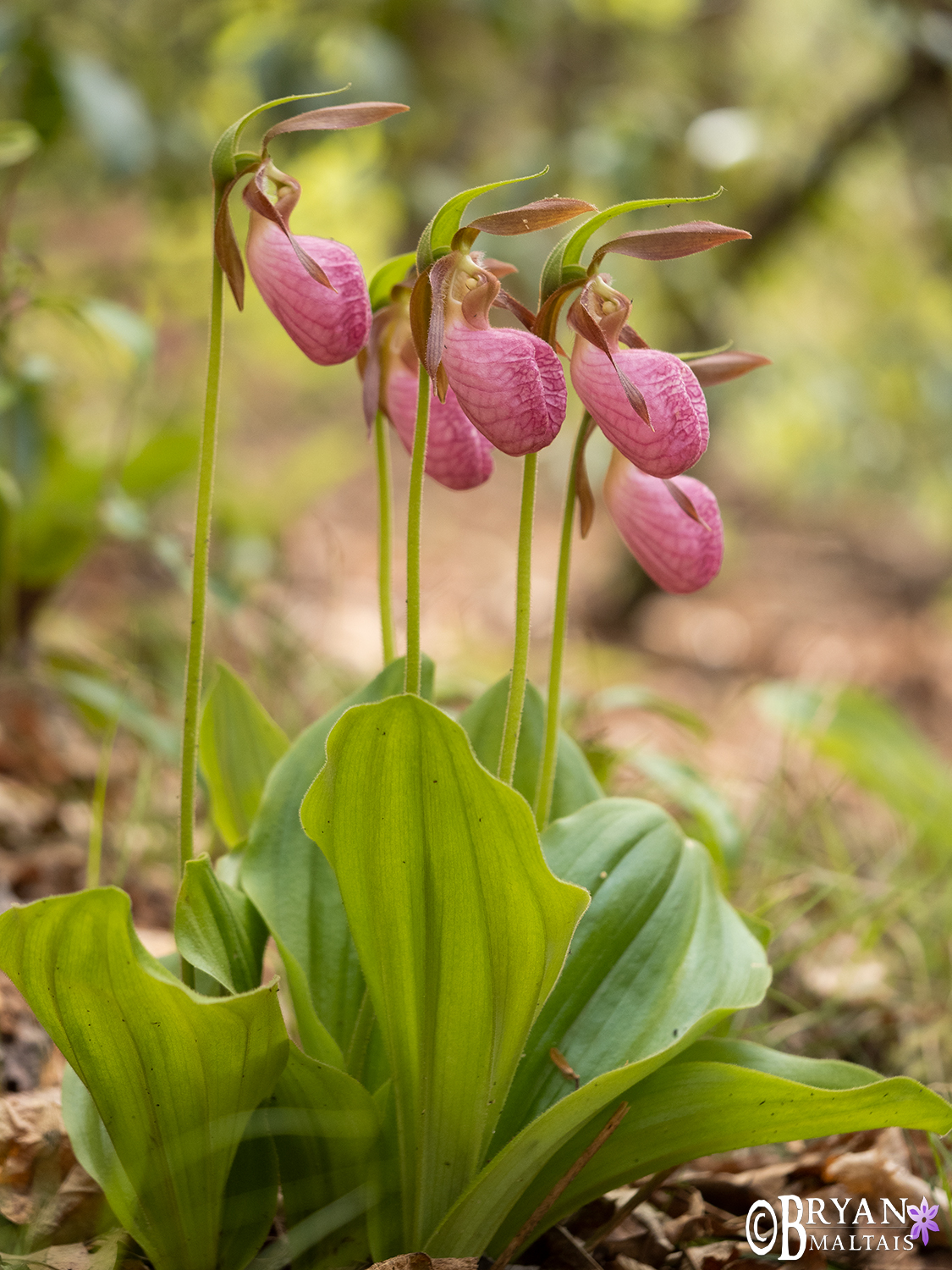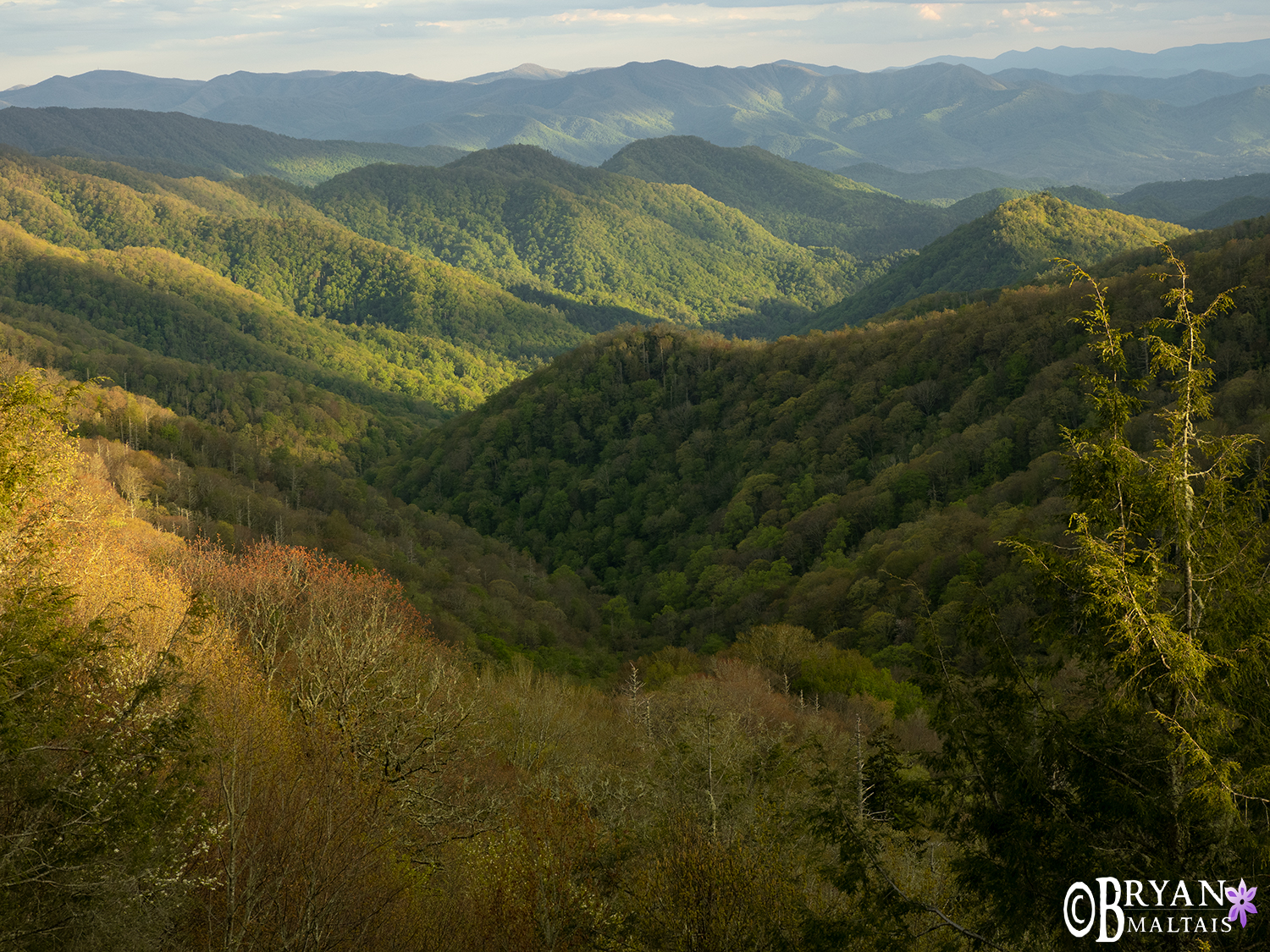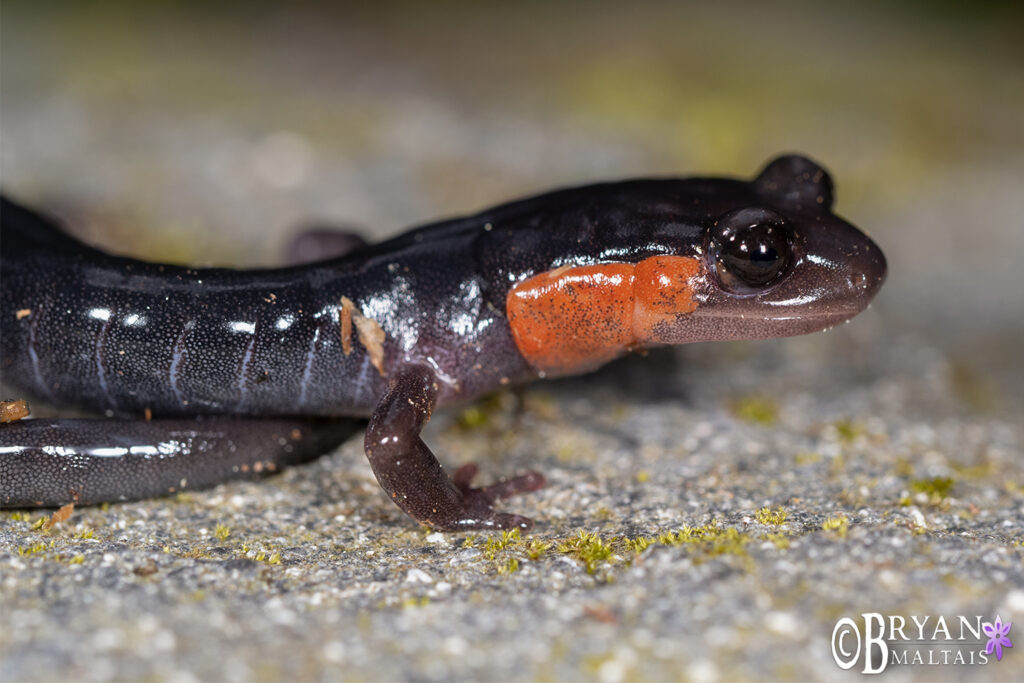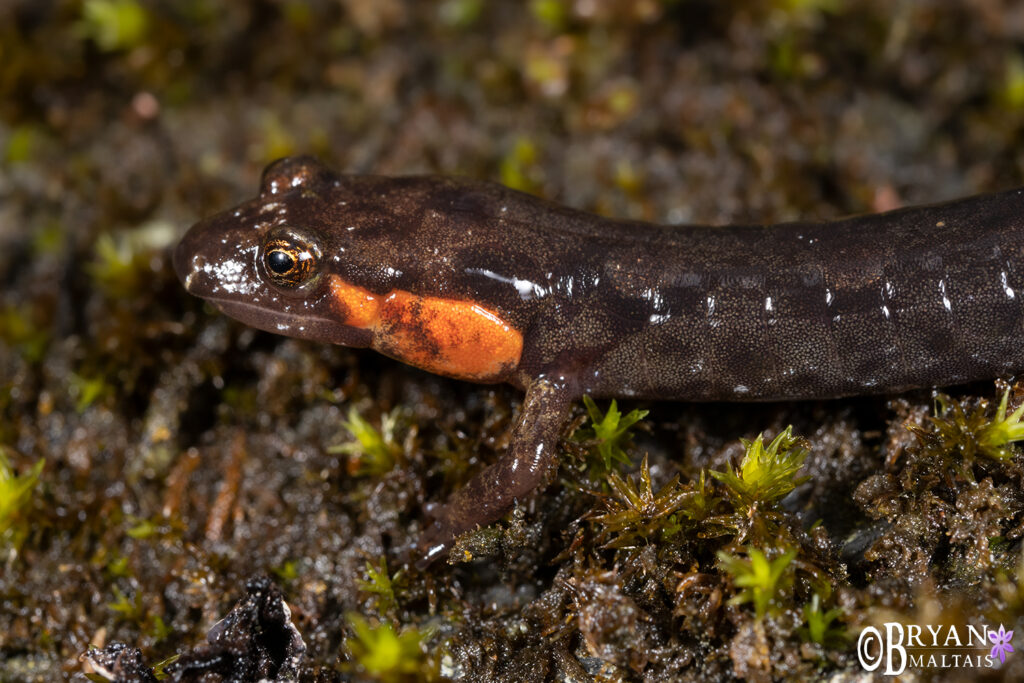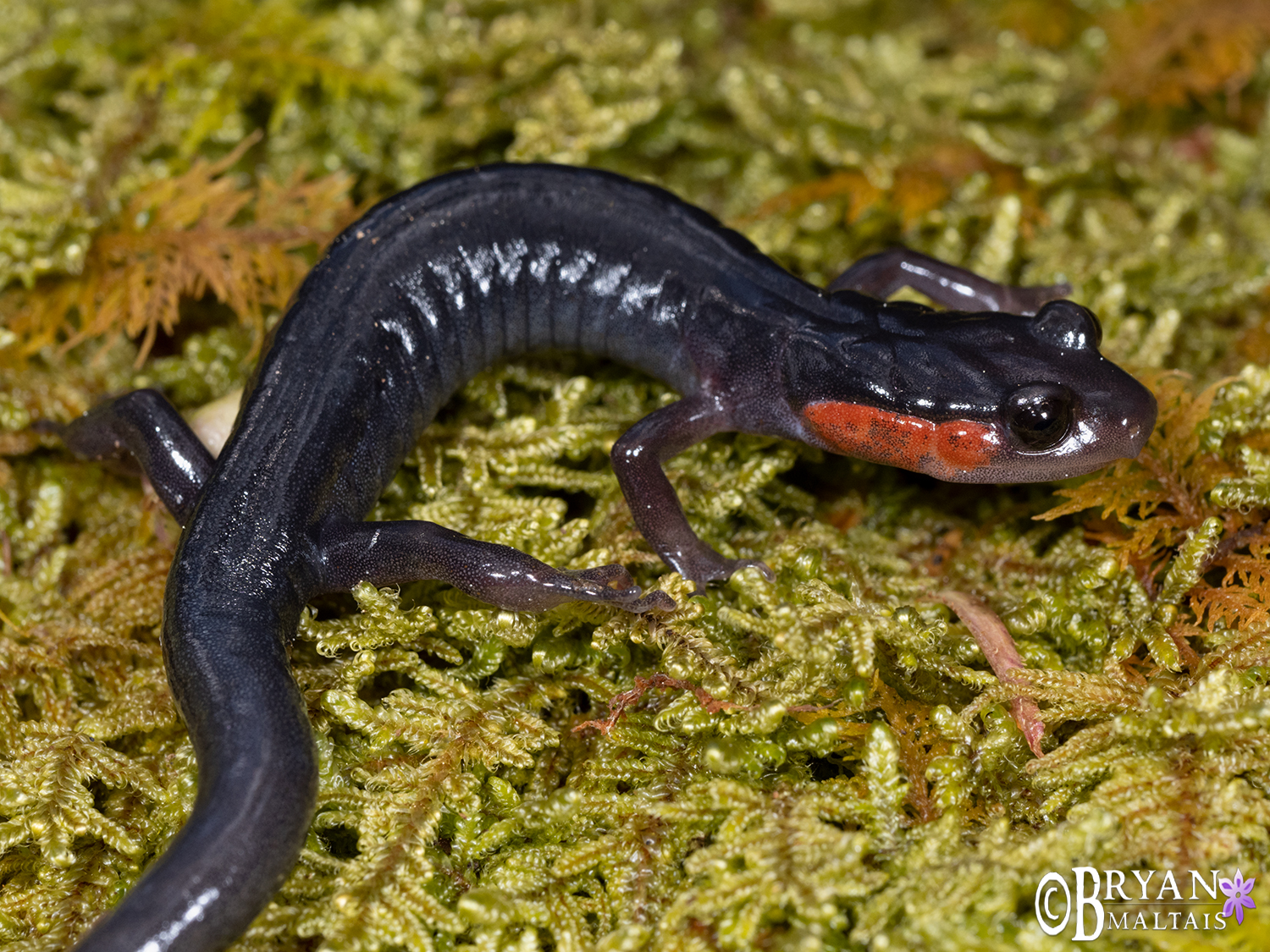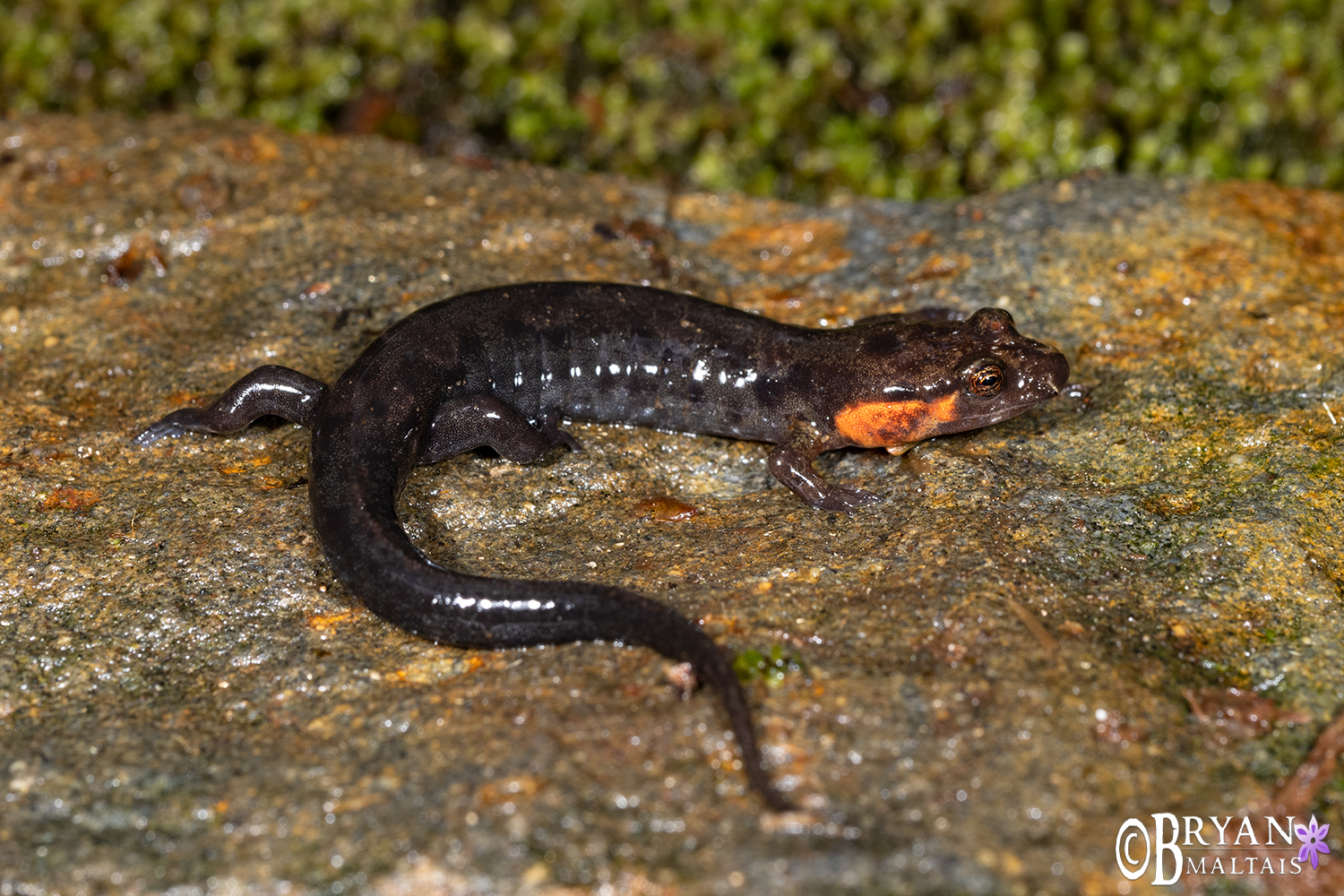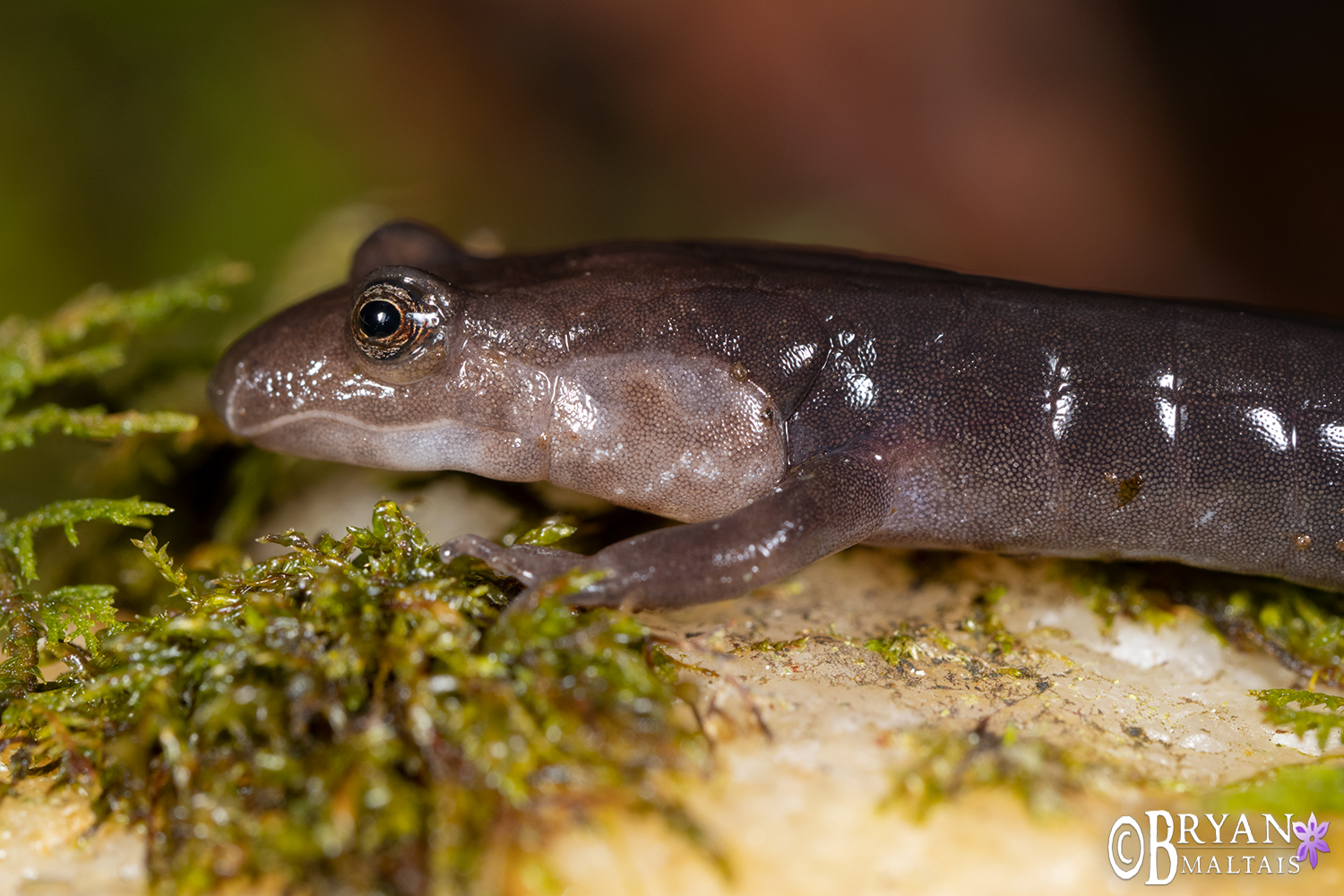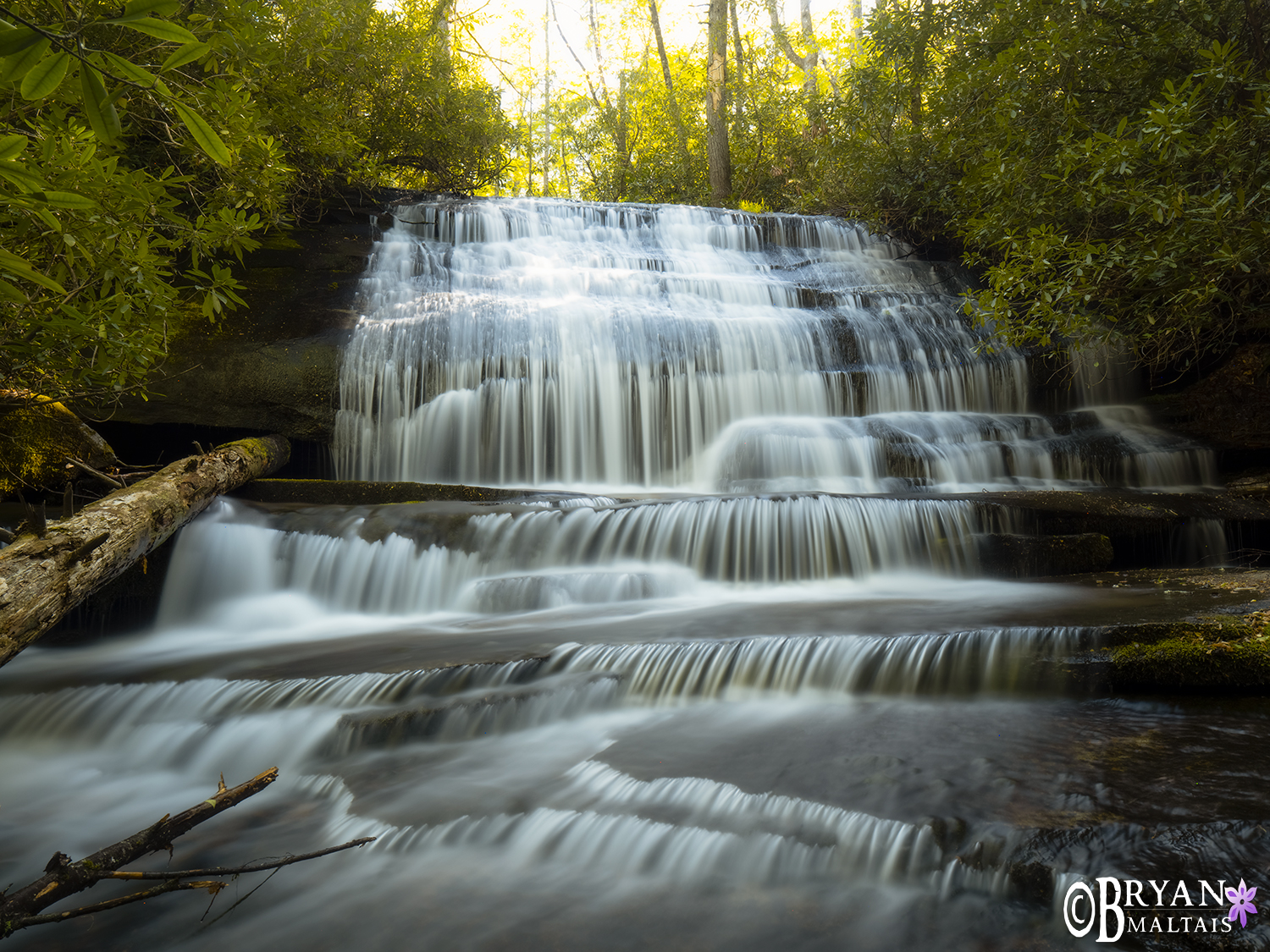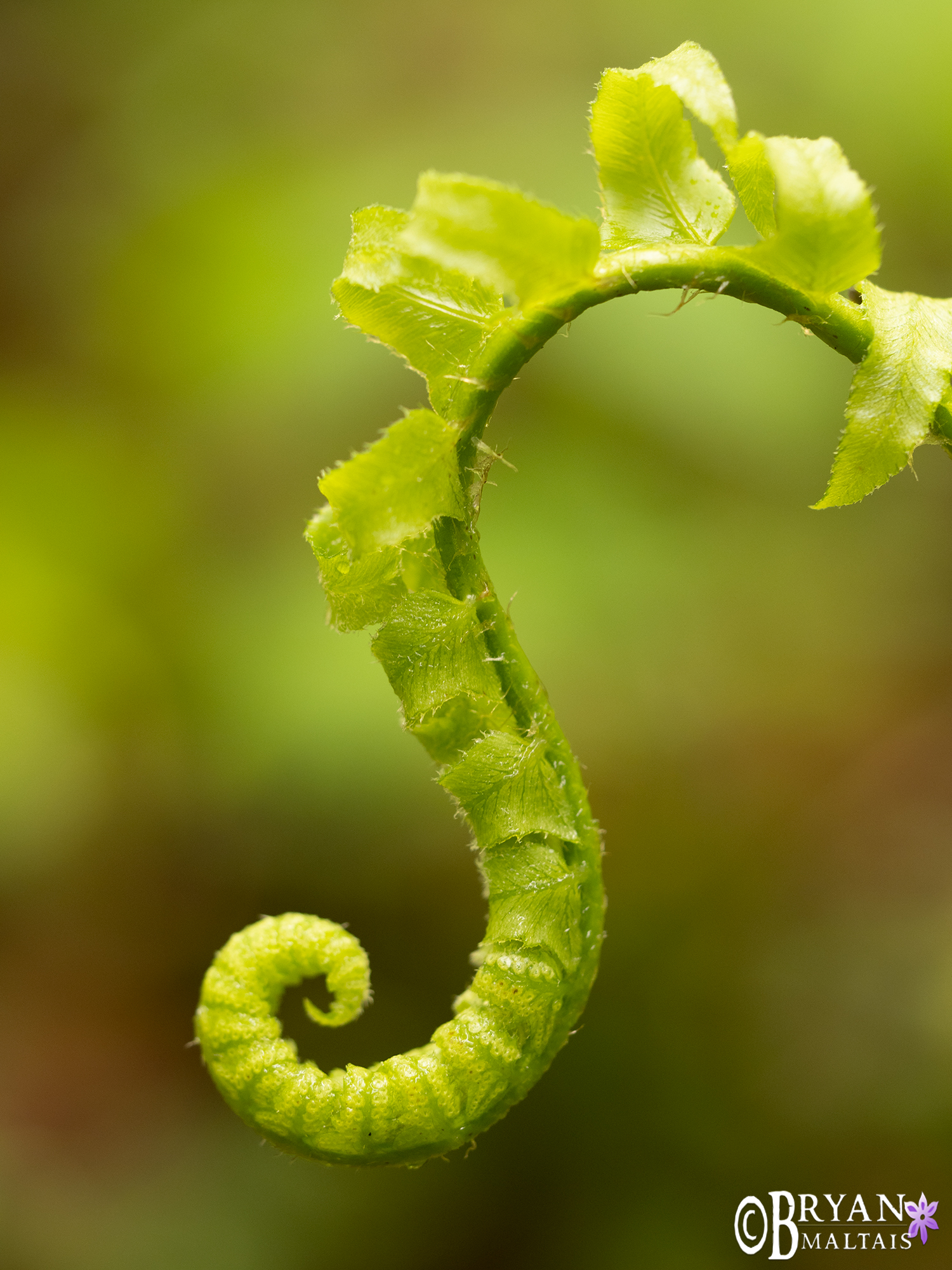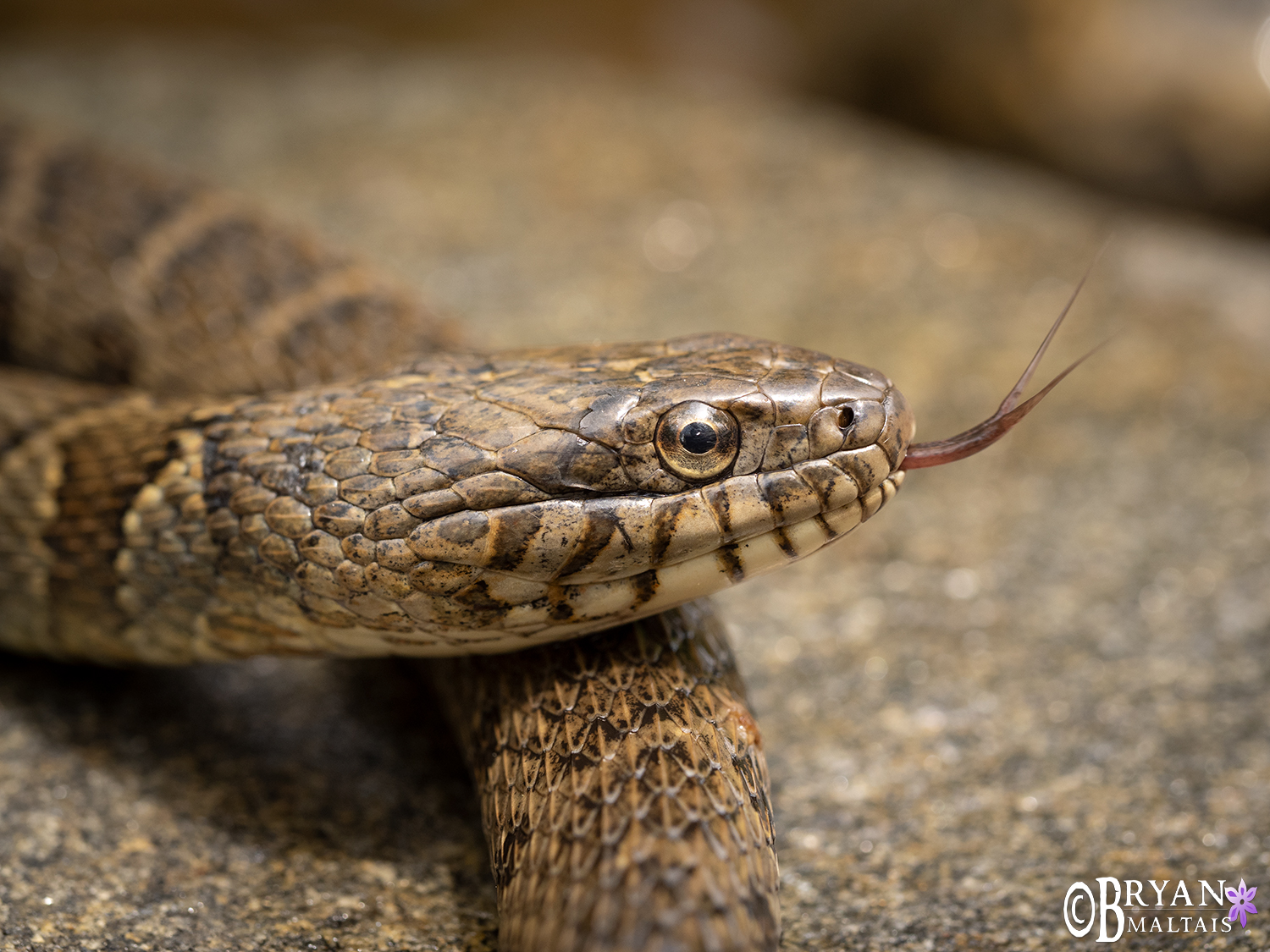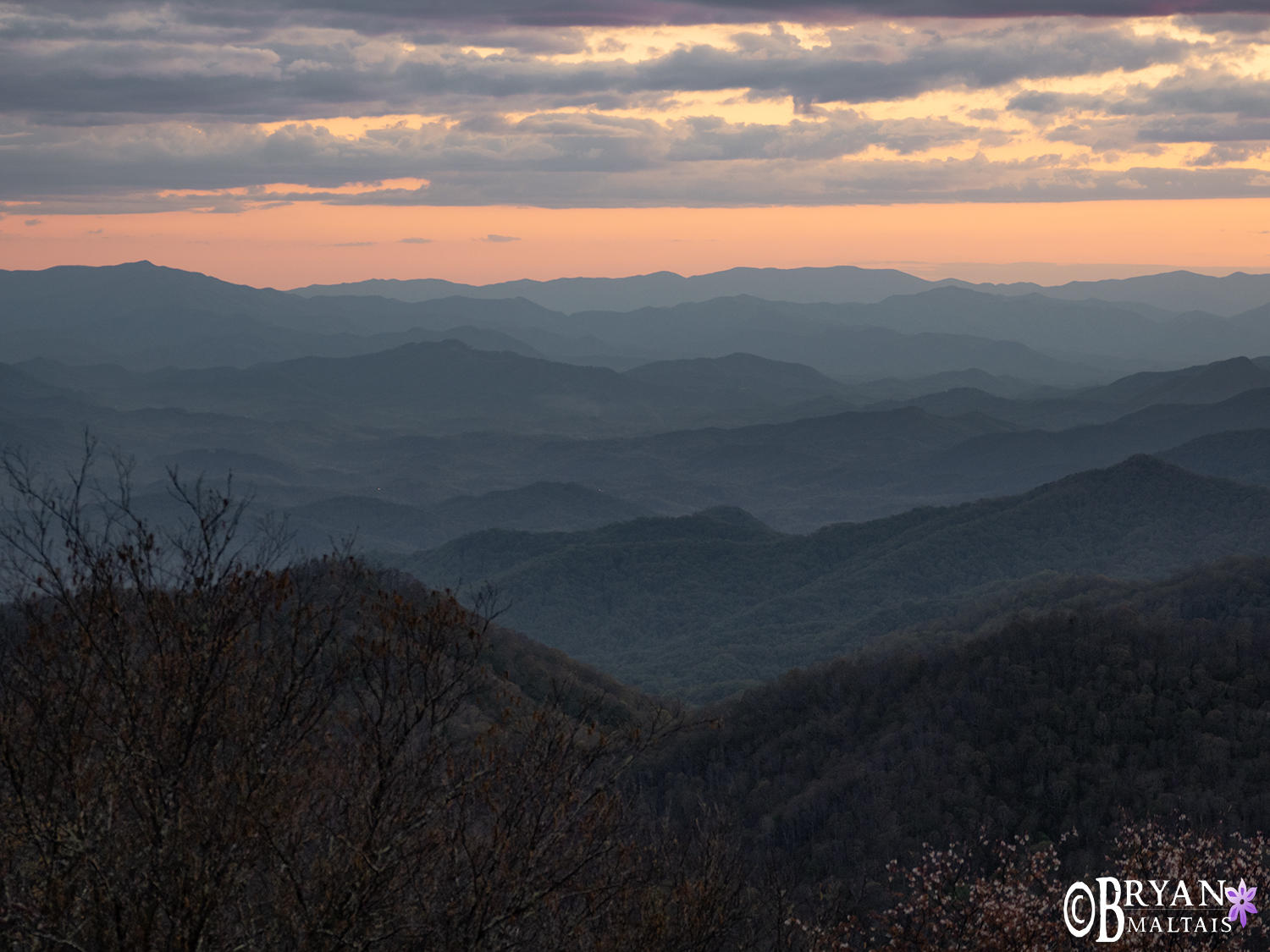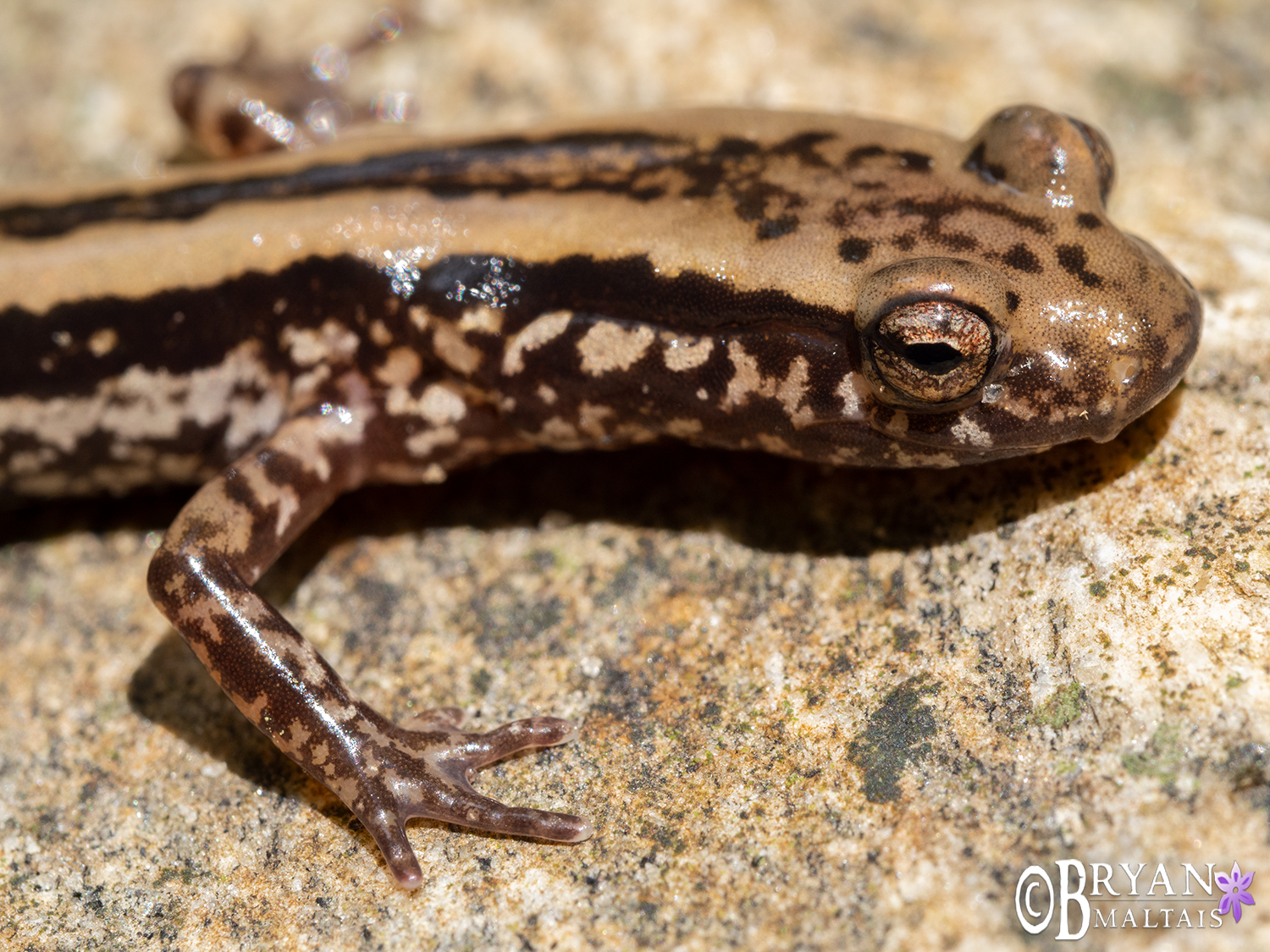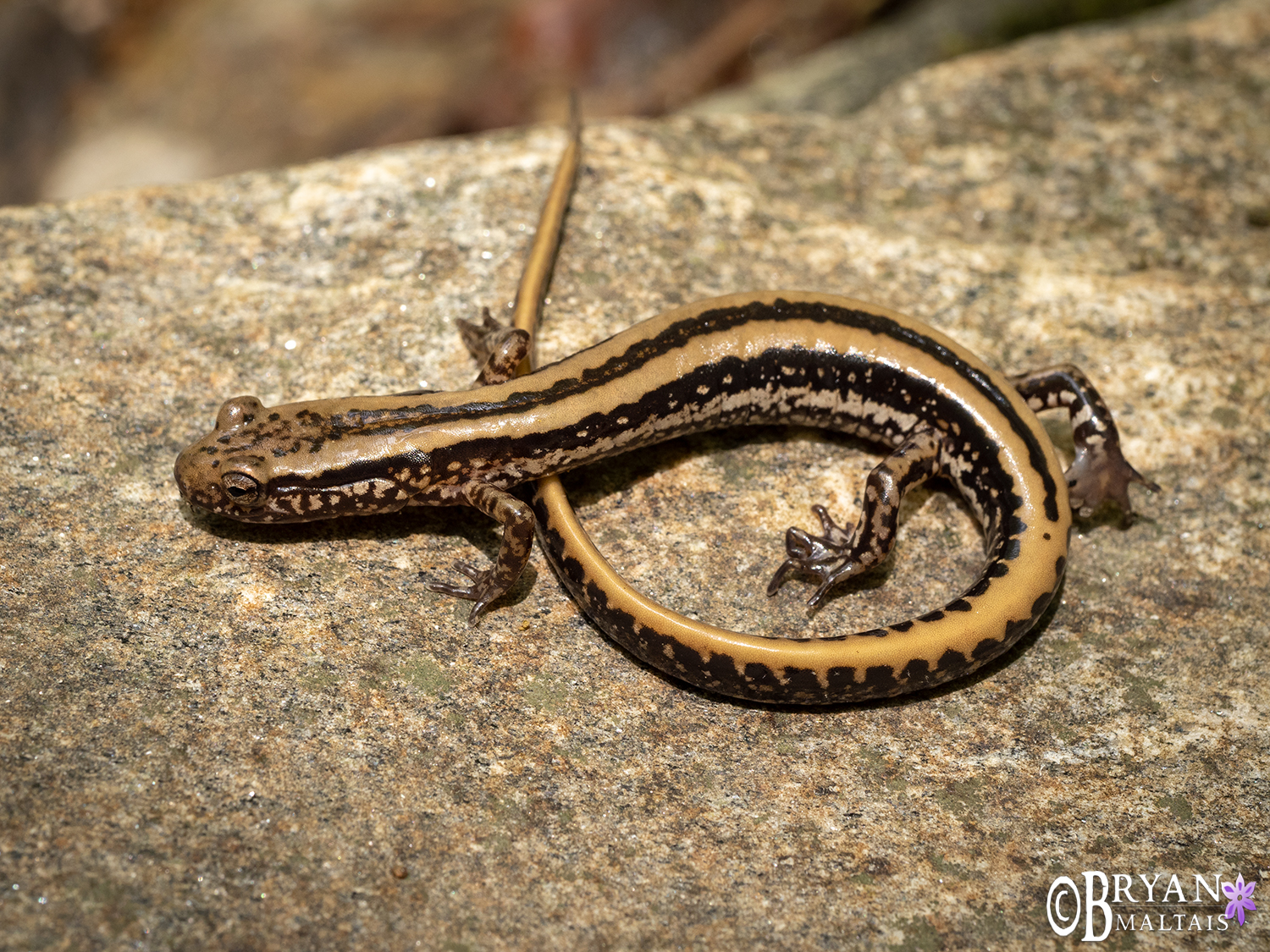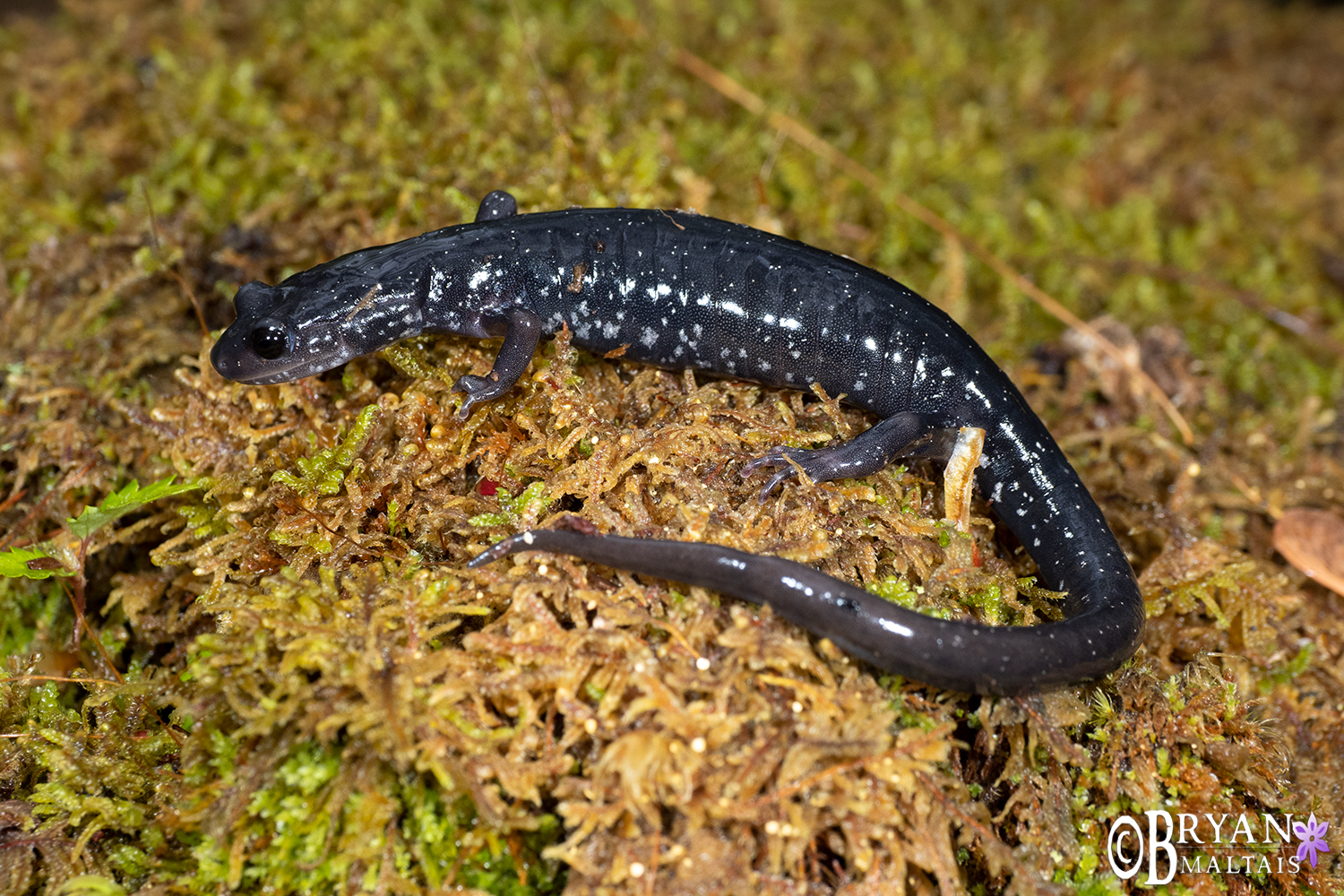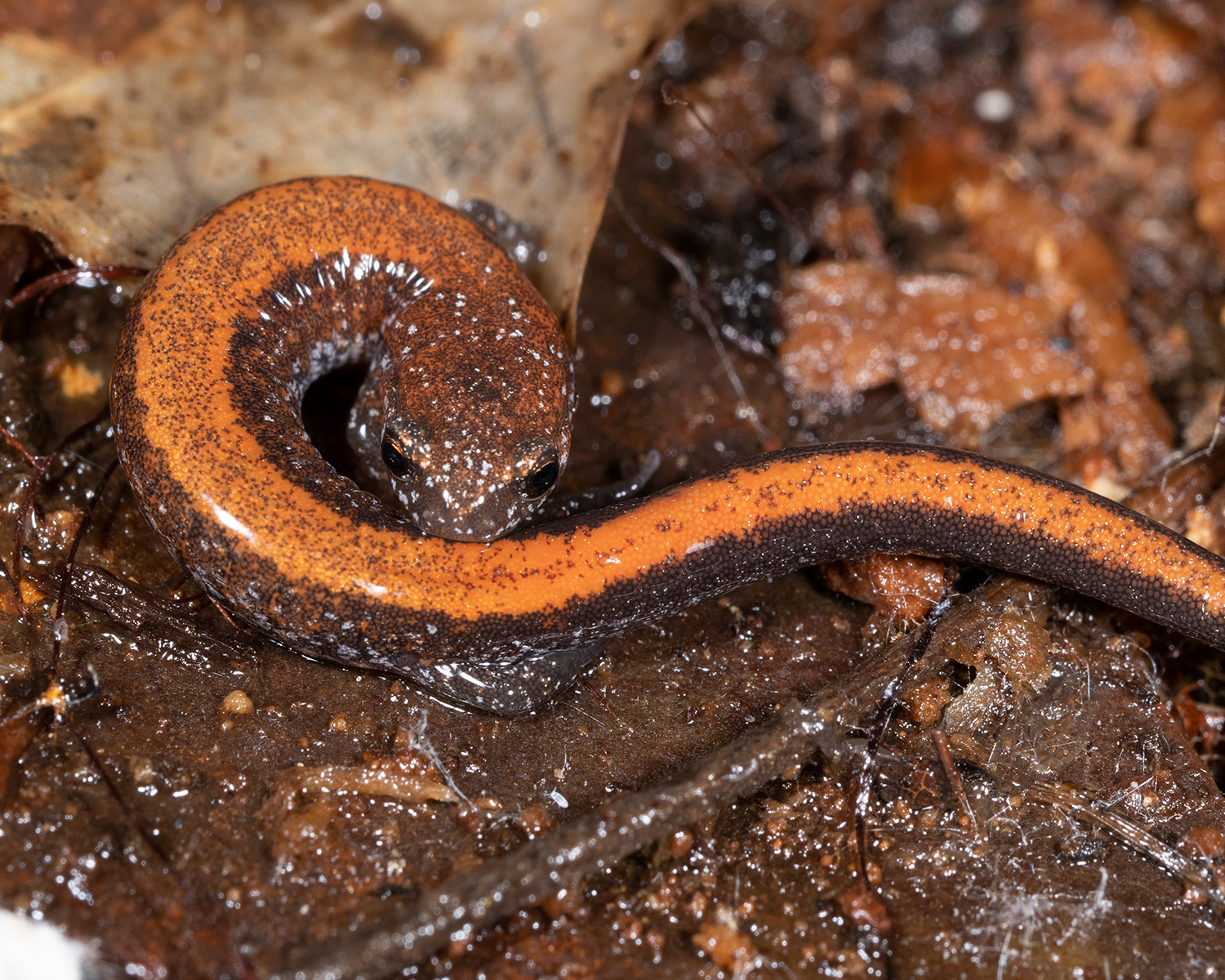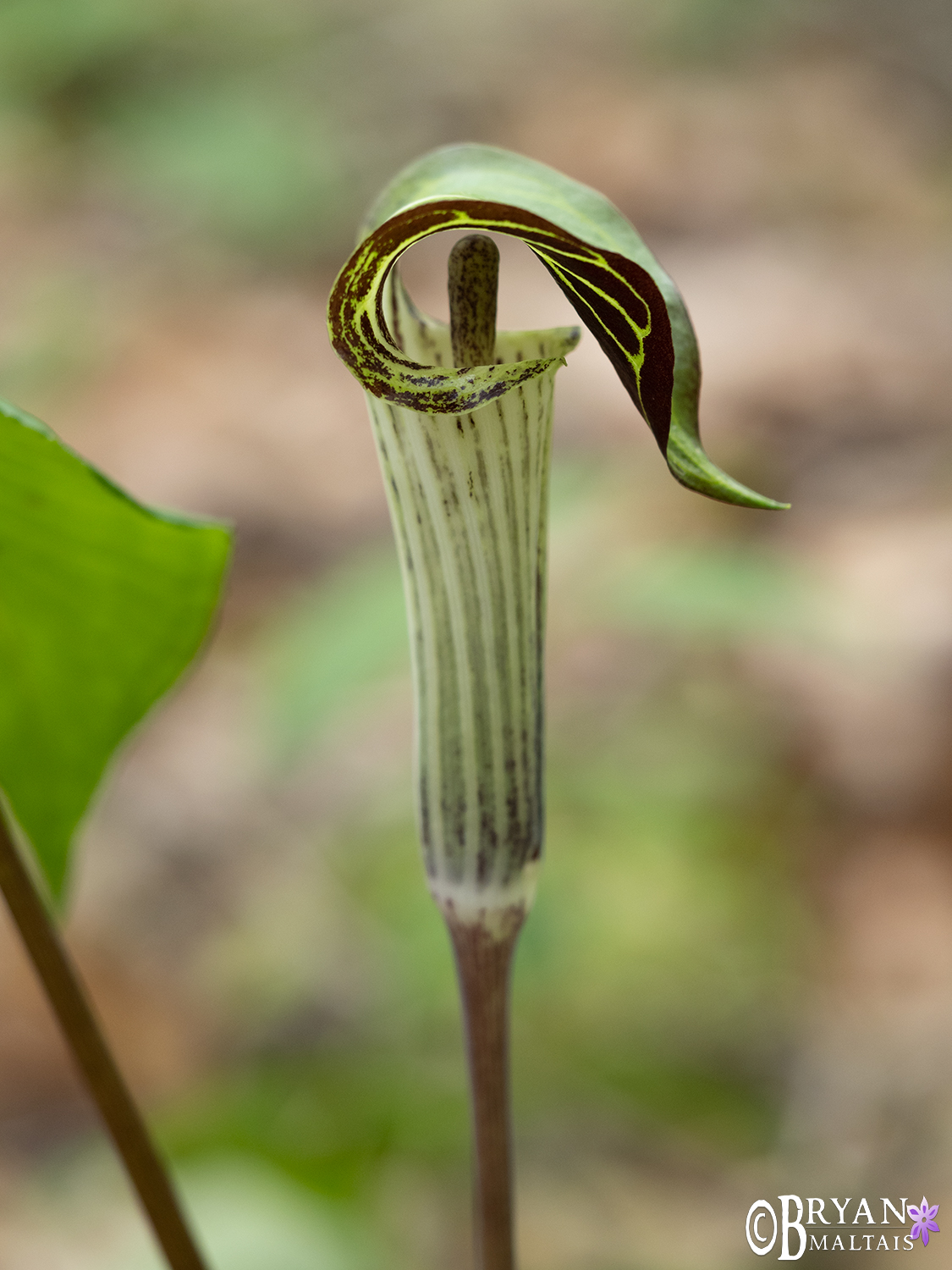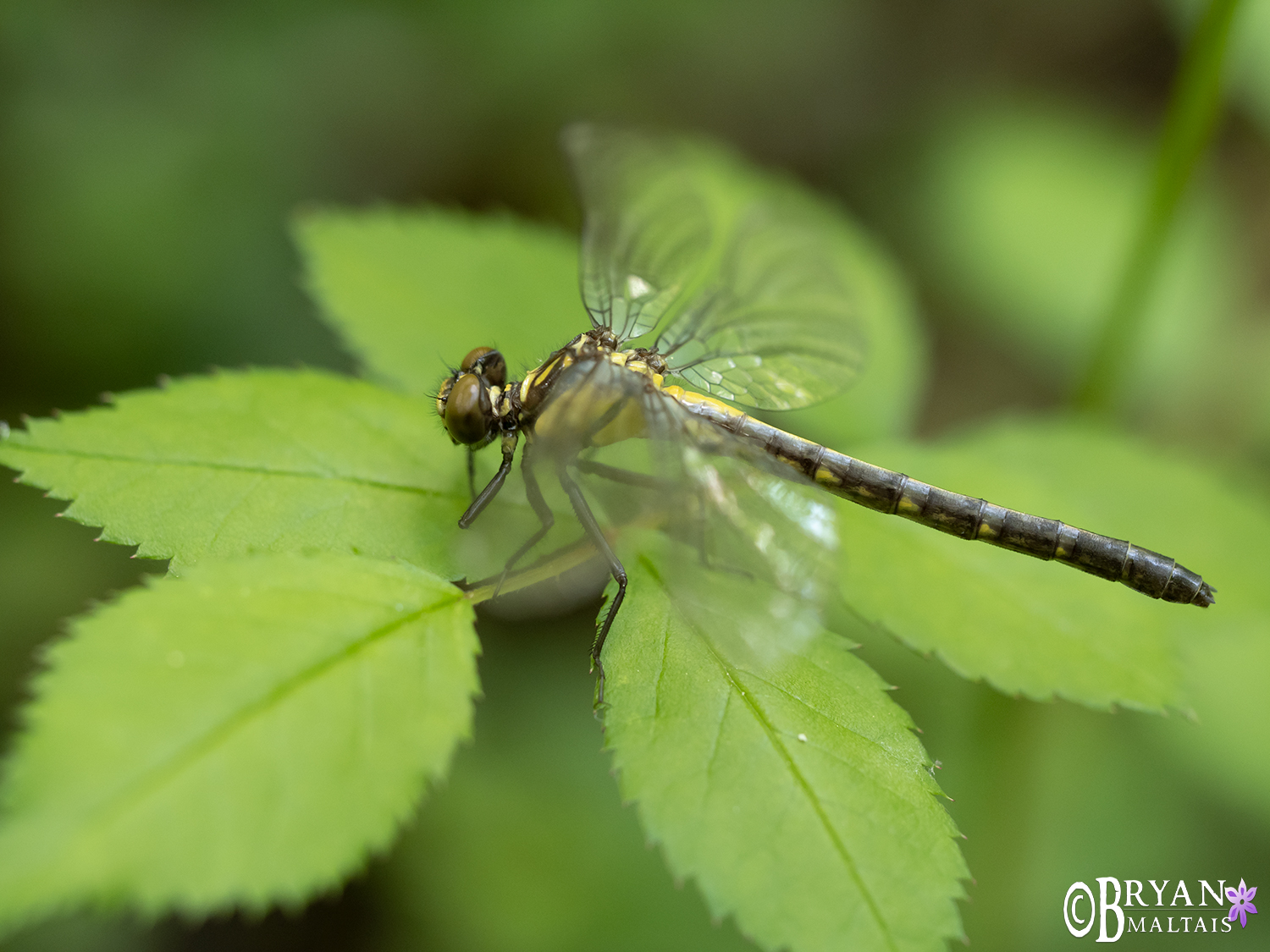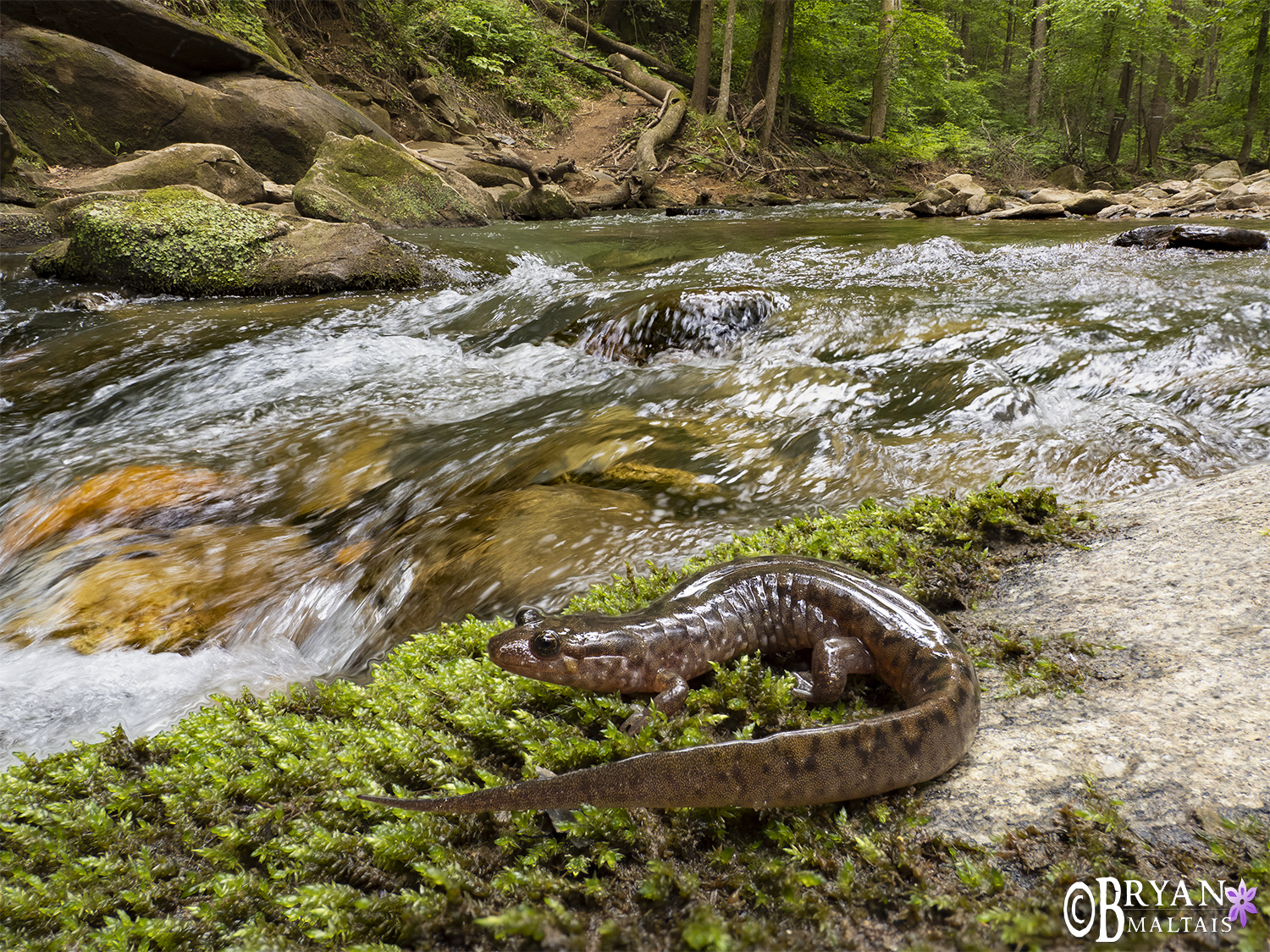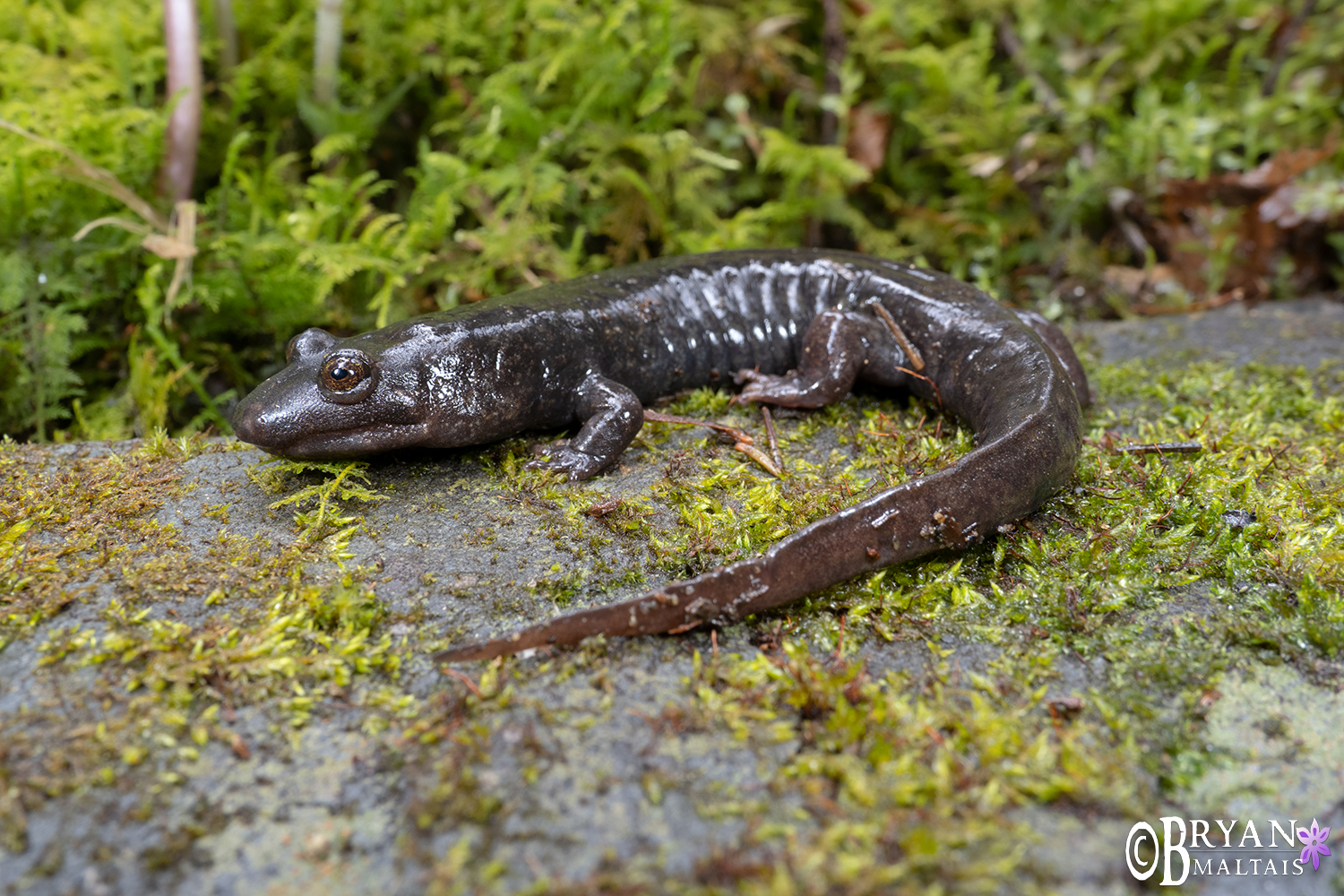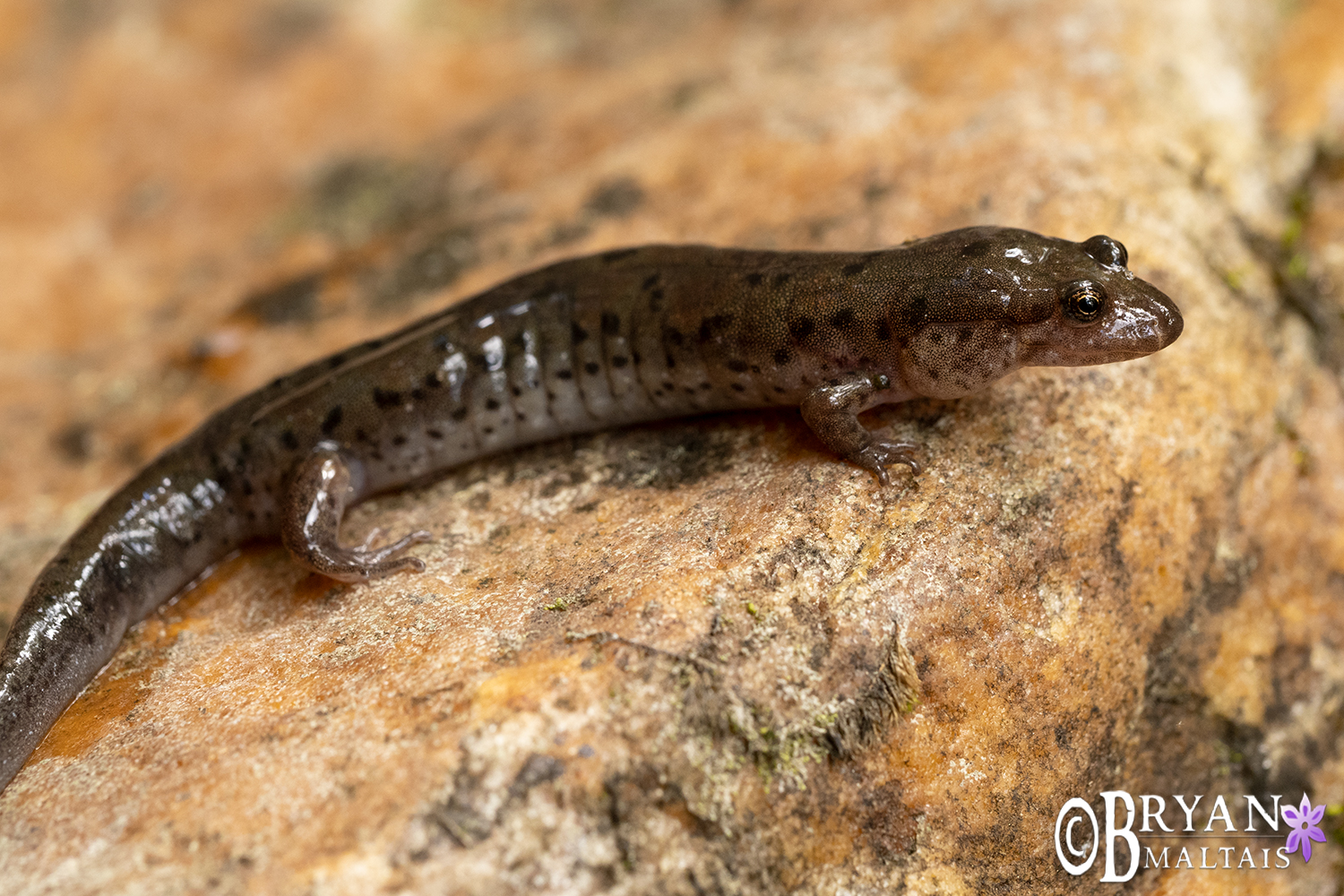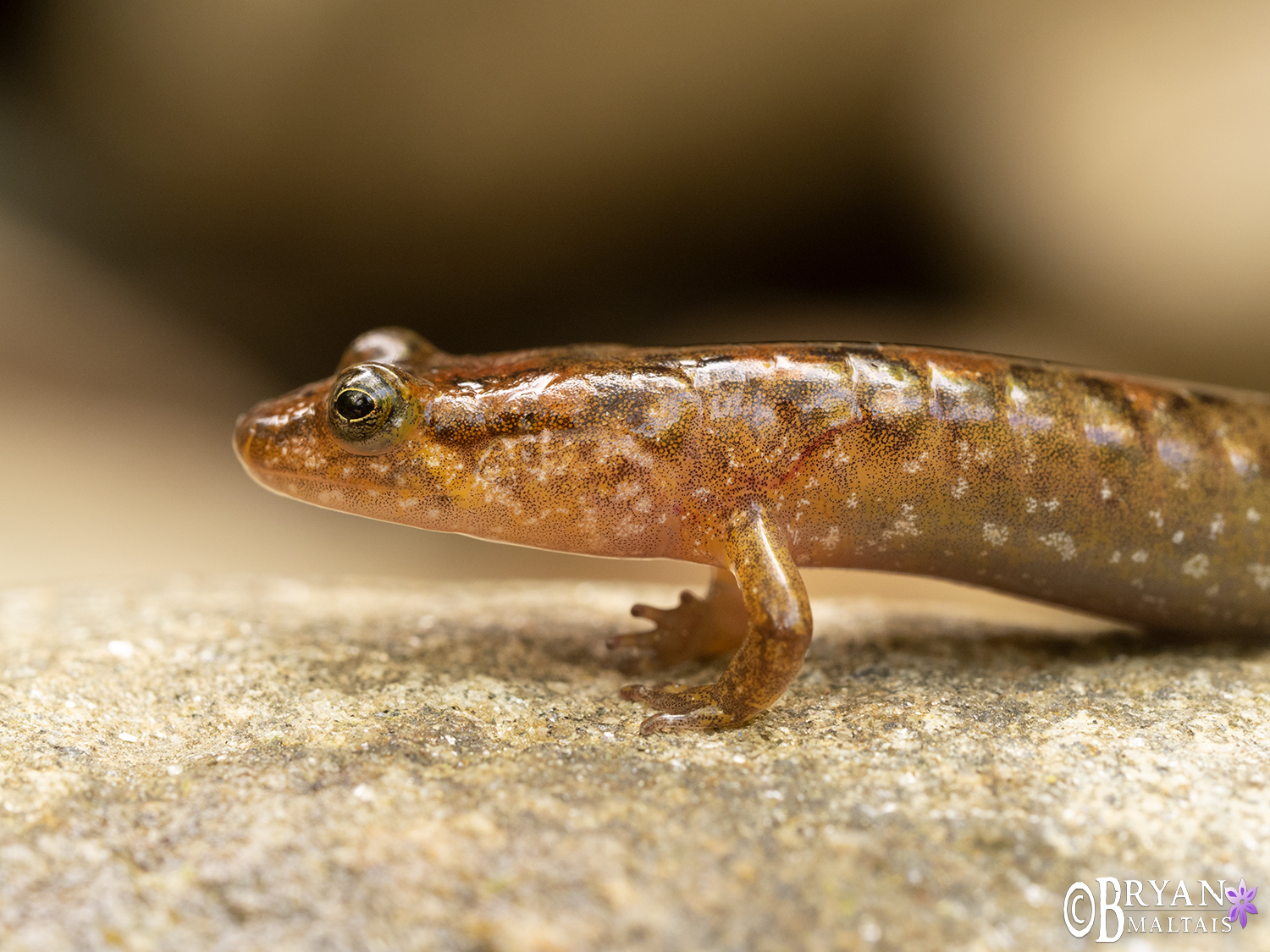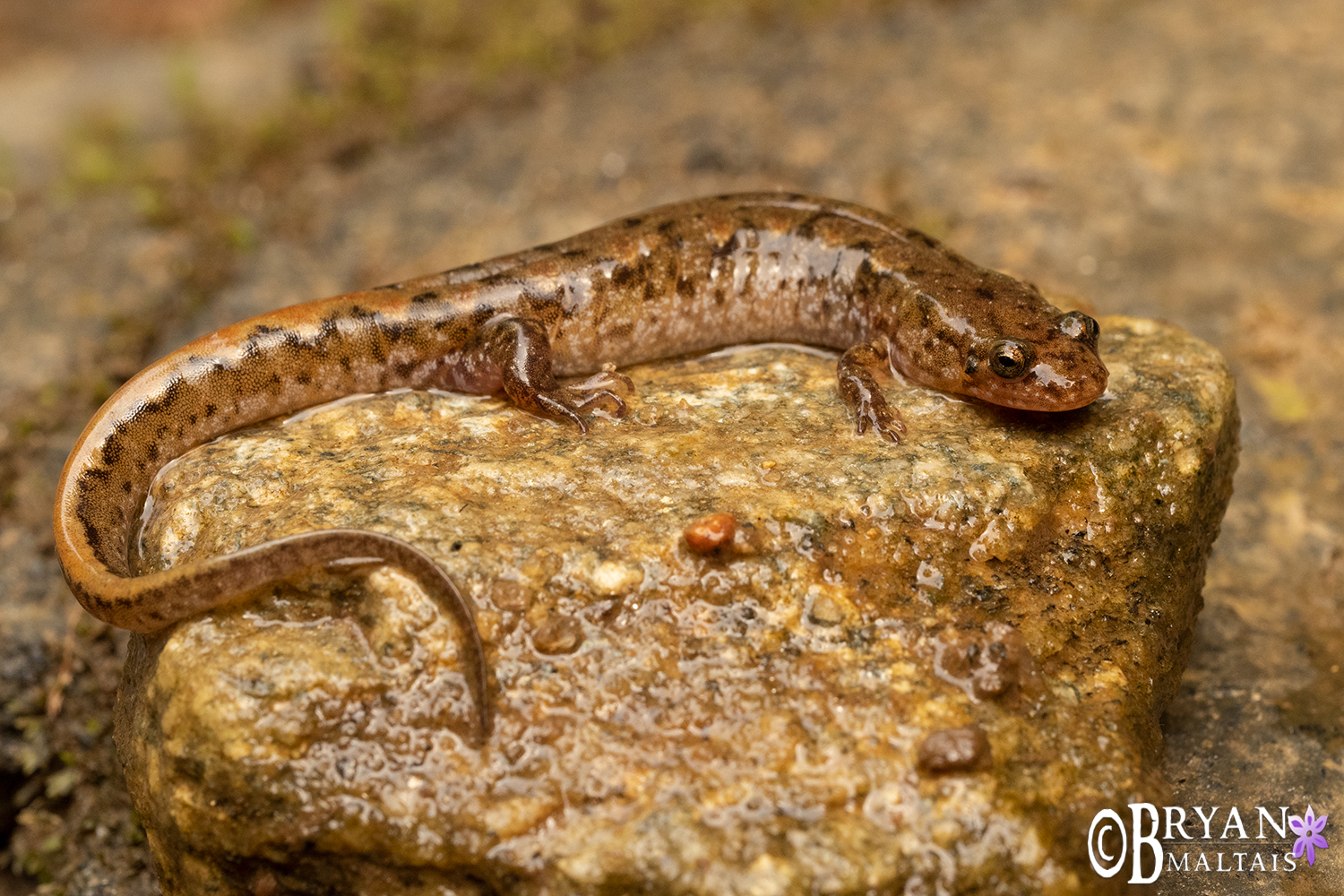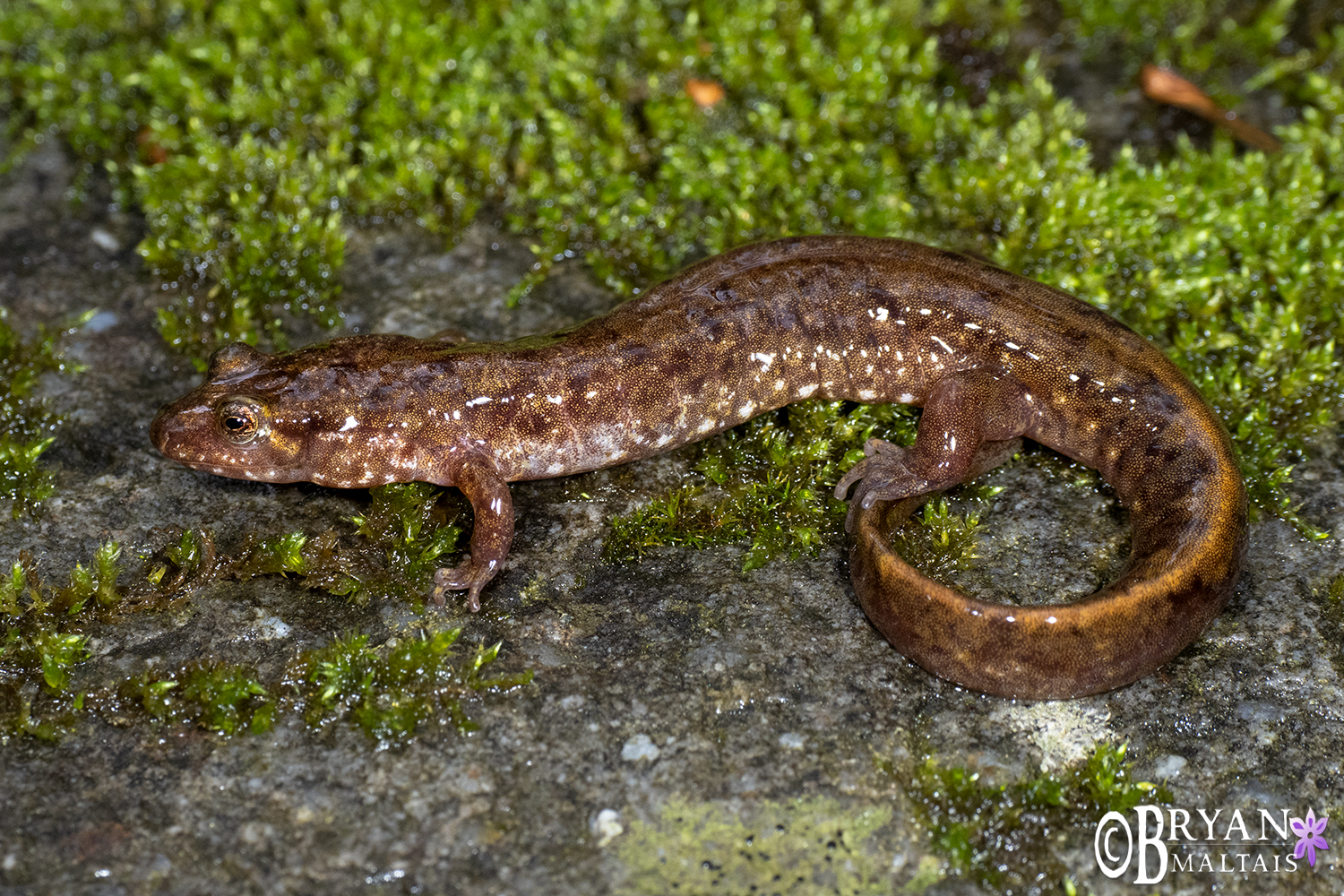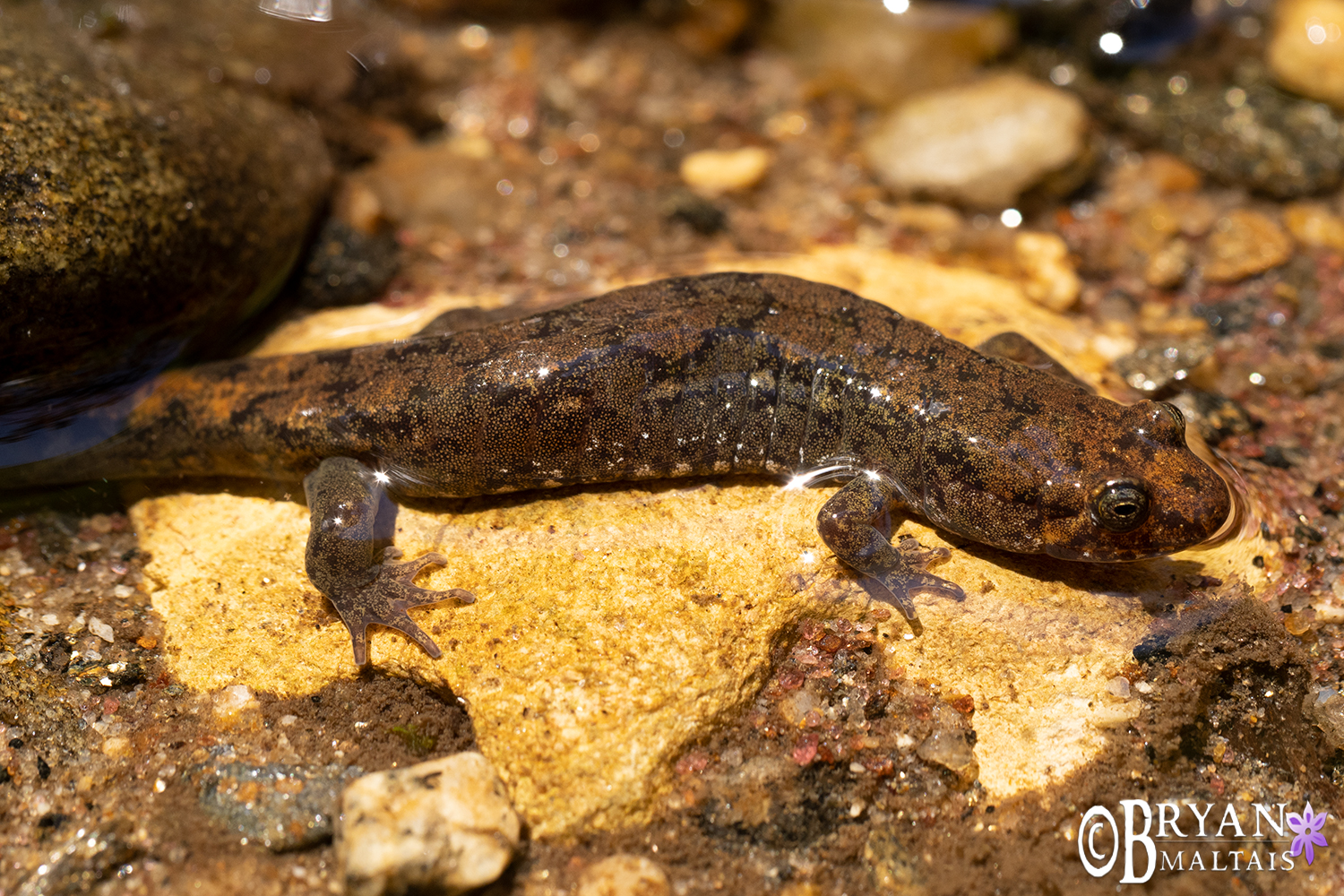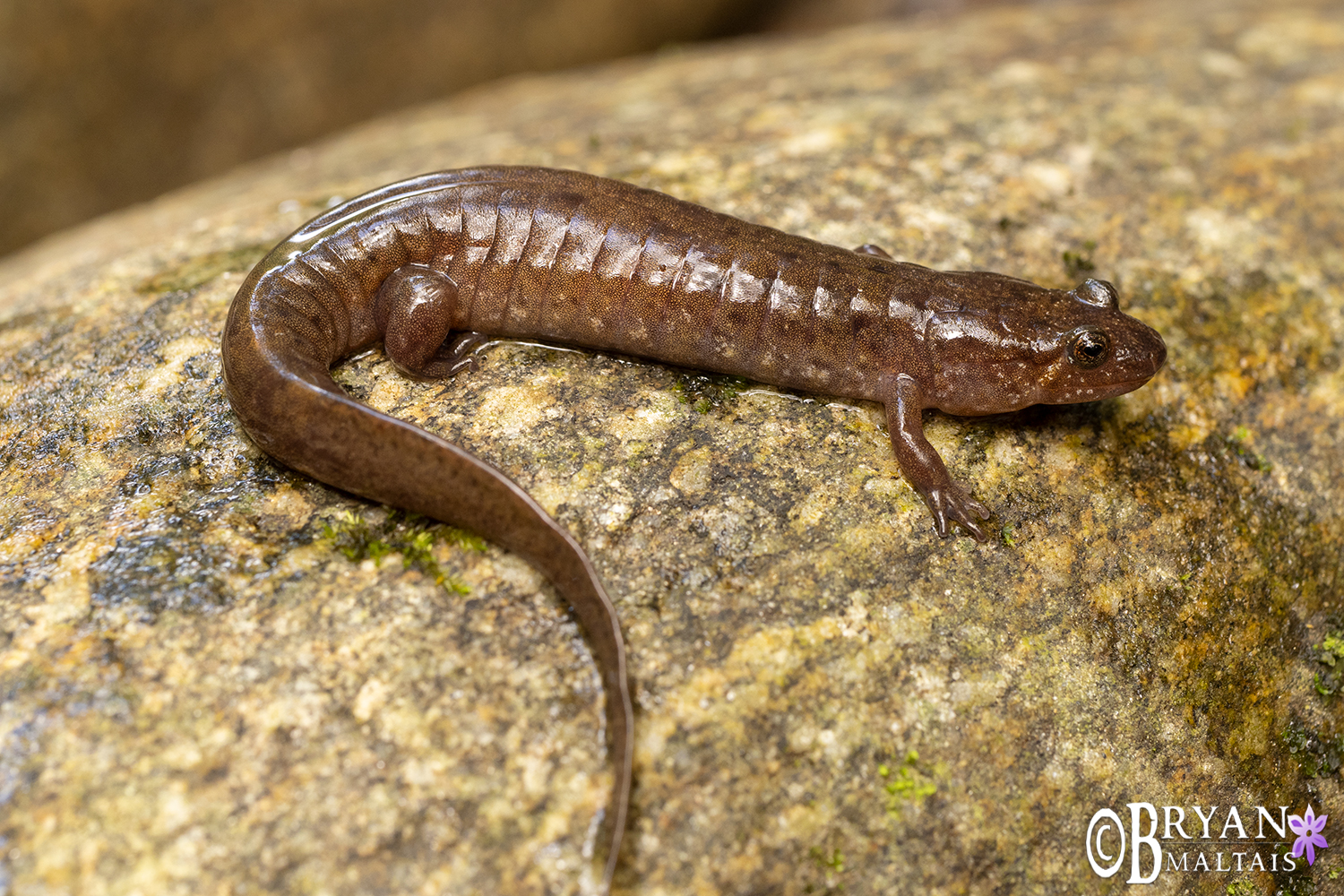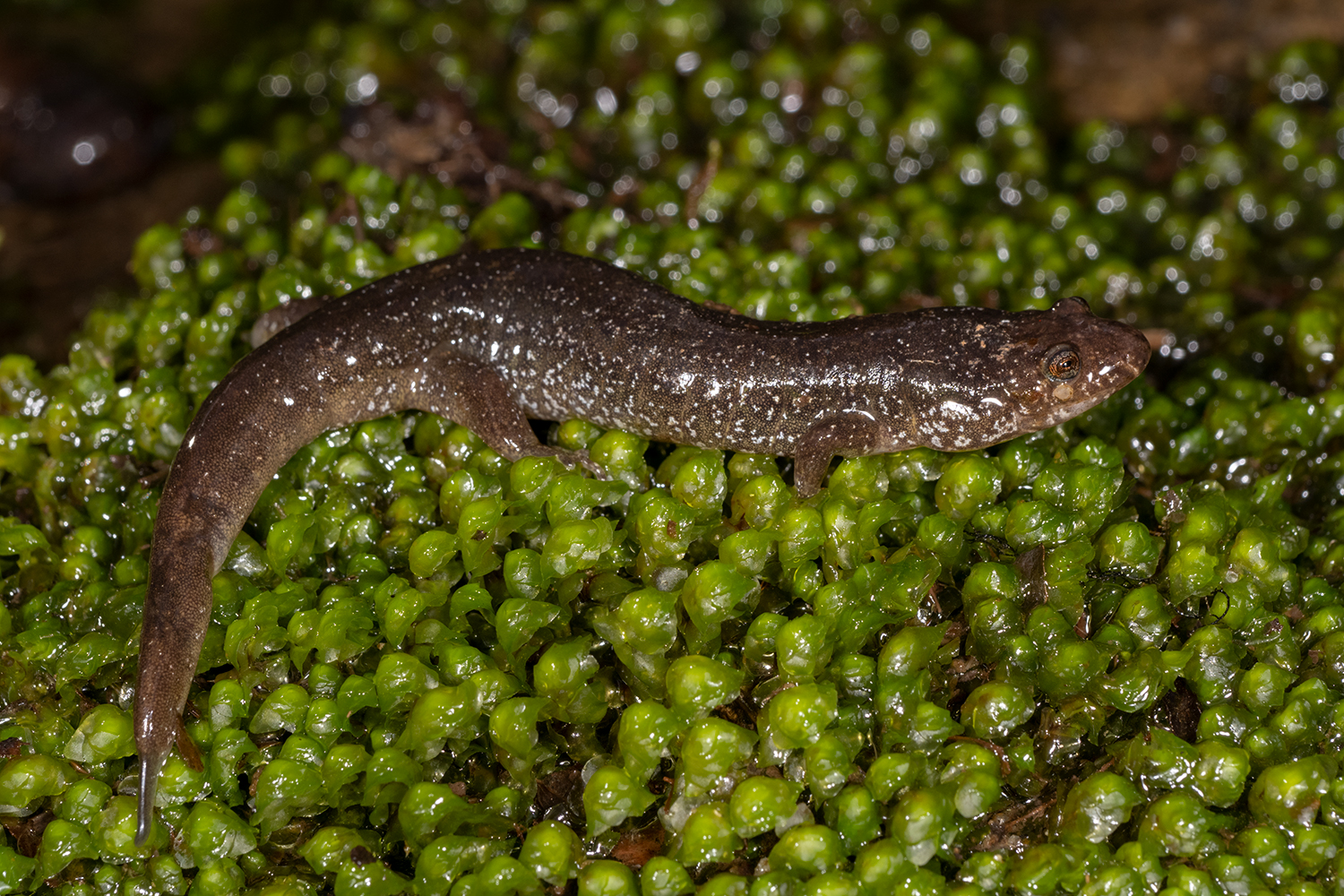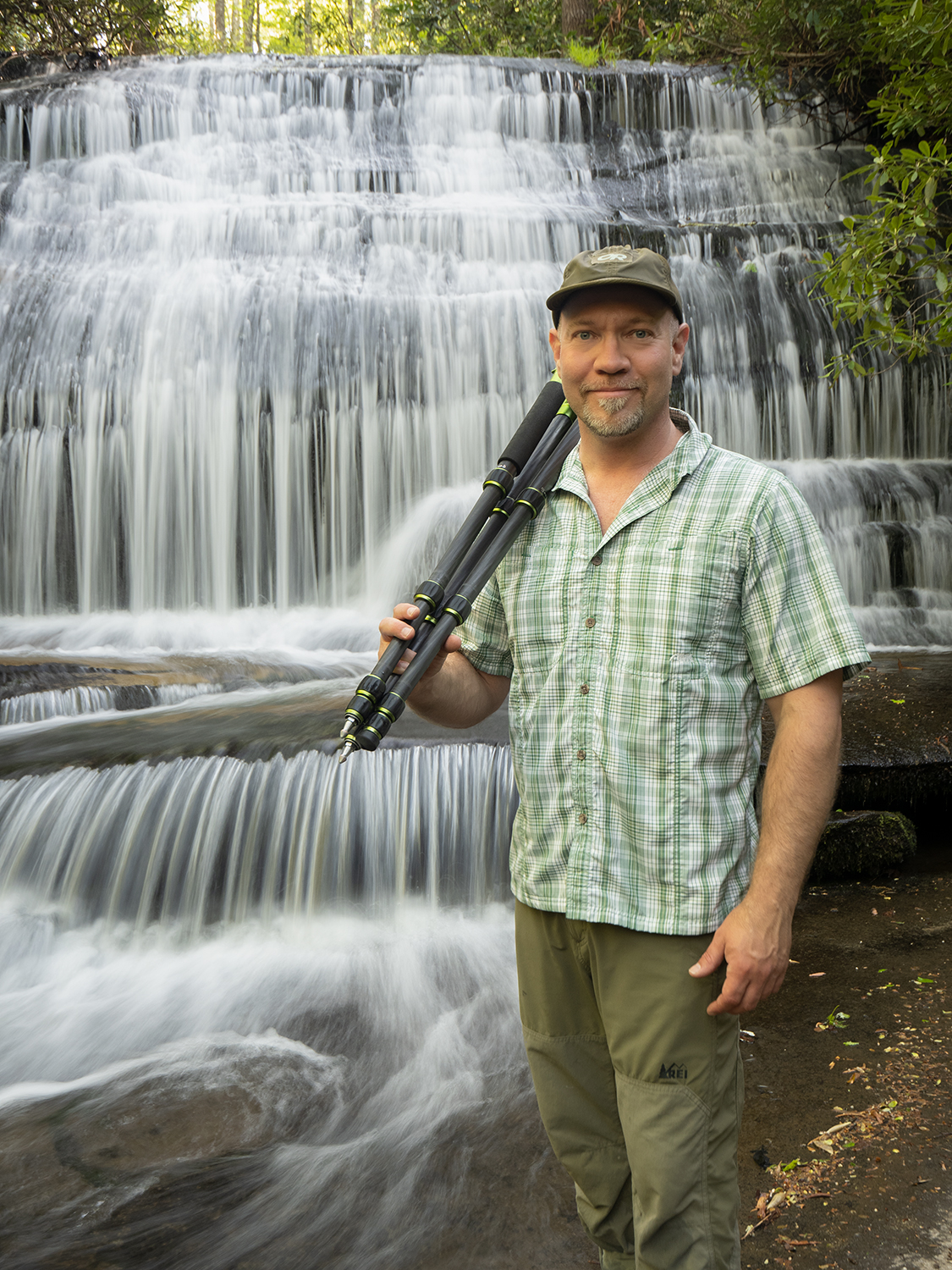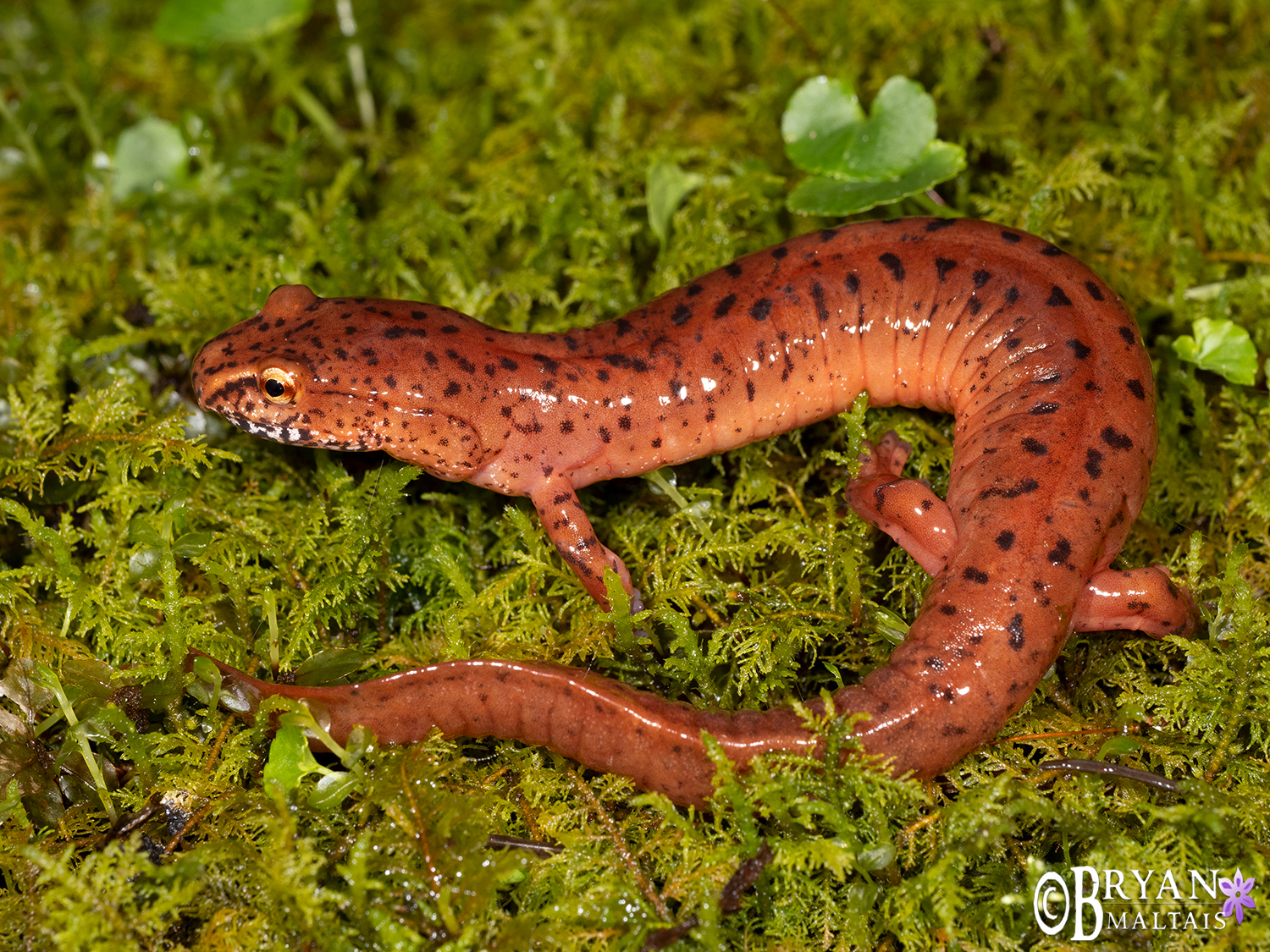
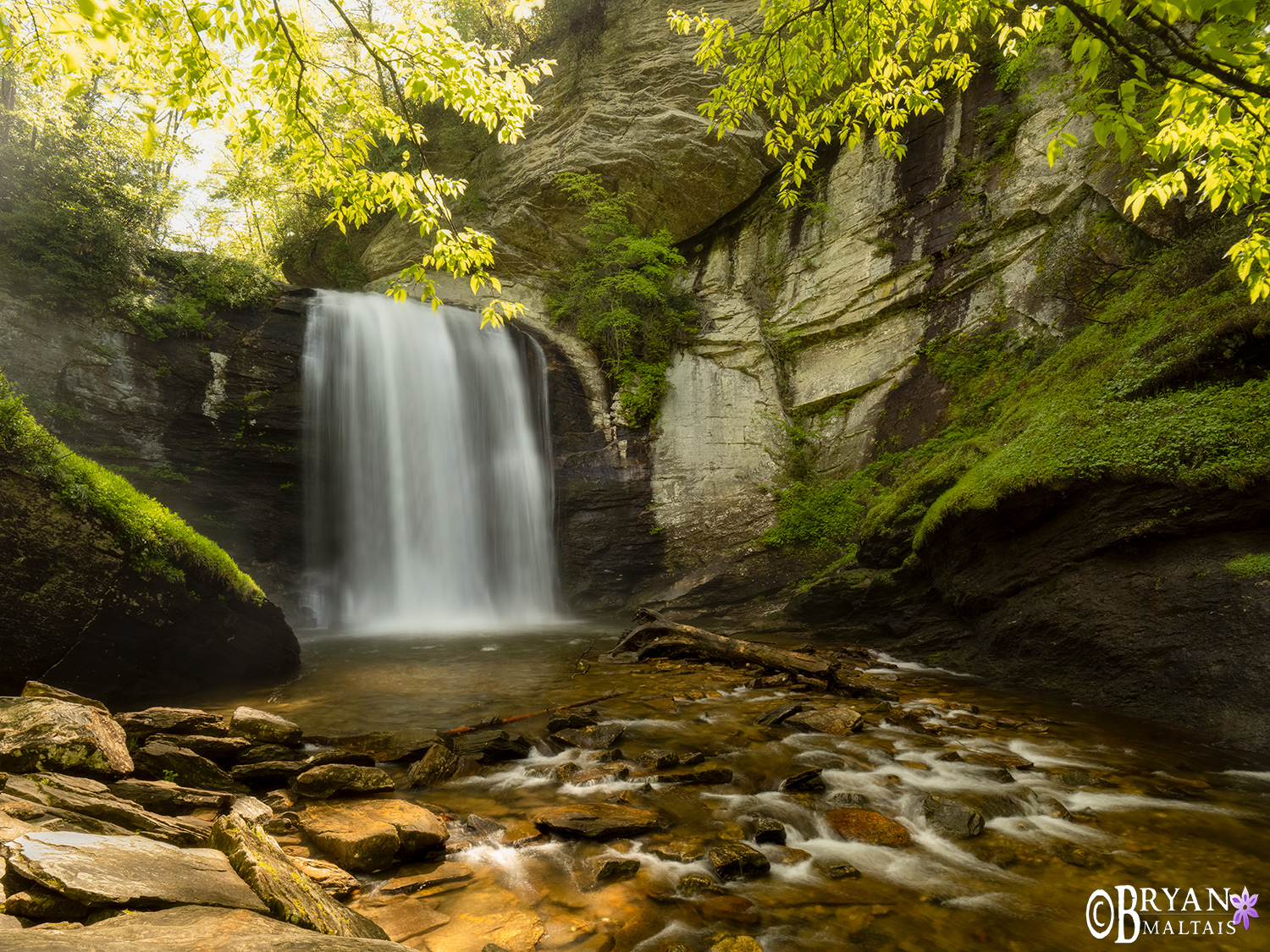
Great Smoky Mountain National Park and the Appalachian Mountains of western North Carolina are a hotspot for amphibians. There are more salamander species in this region than anywhere else on Earth. North Carolina boasts 90+ amphibian species, 60 of which are salamanders. GSMNP itself harbors 44 amphibian species, and it’s a wonder that it’s taken me this long to reach this amphibian Mecca. I spent the unseasonably cold week of May 8-15, 2021 exploring the area. This was also the week of the Colonial Pipeline cyber-attack, which made getting around challenging. I found a fascinating diversity of amphibians and learned some new things about them that I was blind to before the trip. I was also very taken with the North Carolina landscape, its people, small towns, and beautiful rivers.
Eastern Hellbender (Cryptobranchus alleganiensis)
The Eastern Hellbender is probably the most exciting amphibian find of my life. For many herpers it’s the holy grail of amphibians to observe in the wild. I found this Eastern Hellbender in one of the few rivers where they still exist whose location I won’t reveal. This 18″ individual stayed around just long enough for me to take a few snapshots and a short video and then disappeared into the depths with a strong thrash when I got too close. After searching tirelessly in the strong current in the main channel of the river I finally found one in a calm, shallow cove after I’d given up; not where you’d expect to discover one.
At up to 30″ it’s one of 3 giant salamander species on Earth. They’re rare because they require pristine, undisturbed habitat. They’re hard to observe because they live beneath huge rocks in cold, fast moving rivers that carry high dissolved oxygen. They don’t live in muddy, slow moving rivers. Hellbenders eat primarily Crayfish. They’re extremely sensitive to water pollutants, siltation, river channelization, or disturbances in general. Once a river has been polluted, dammed, or fallen victim to construction or deforestation along its banks, Hellbenders are unlikely to ever be able to live there.
Their flattened body is adapted to walk on river bottoms without being swept away with the current, their tail is vertically flattened to swim in bursts, and their skin is frilly to increase surface area to absorb oxygen. The Eastern Hellbender is listed as Vulnerable and not Endangered due more to political red tape than existential reality. Decades ago they were purportedly common. Fishermen often caught them on hook when using live bait, and collectors easily found them, though few enclosures would be able to mimic their natural habitat to keep one alive for long.
Spring Salamander (Gyrinophilus porphyriticus)
The Spring Salamander is another “giant” salamander of sorts. At up to 9″ it’s very large for a stream-side salamander. It prowls seepages and moist forests at night for invertebrates. Its diet also includes the diverse menu of smaller salamanders the Appalachians serve up. It’s a shocking surprise whenever I turn up one of these brilliant salmon-pink creations. I found them at the highest elevations in GSMNP in mere trickles of water.

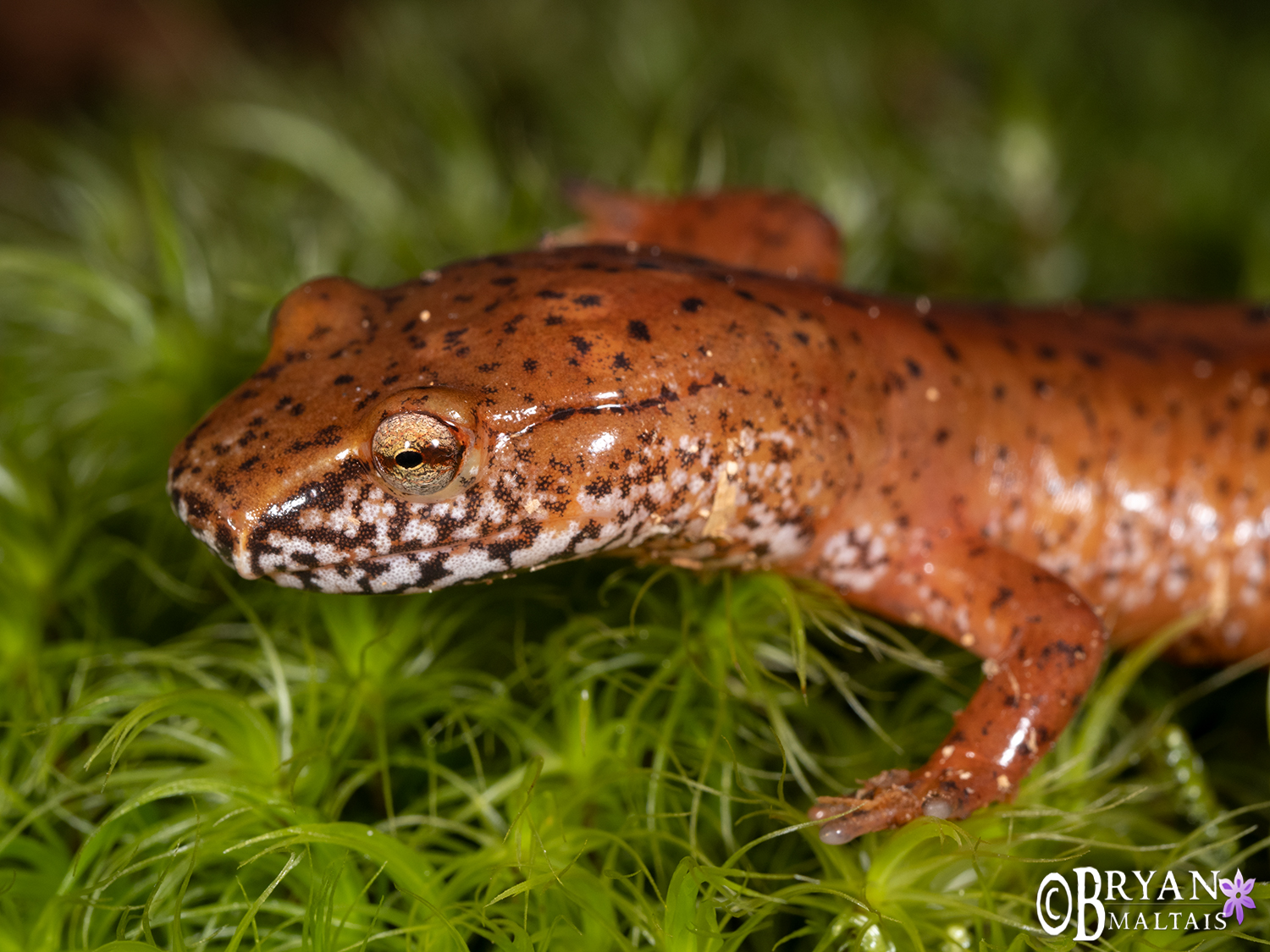
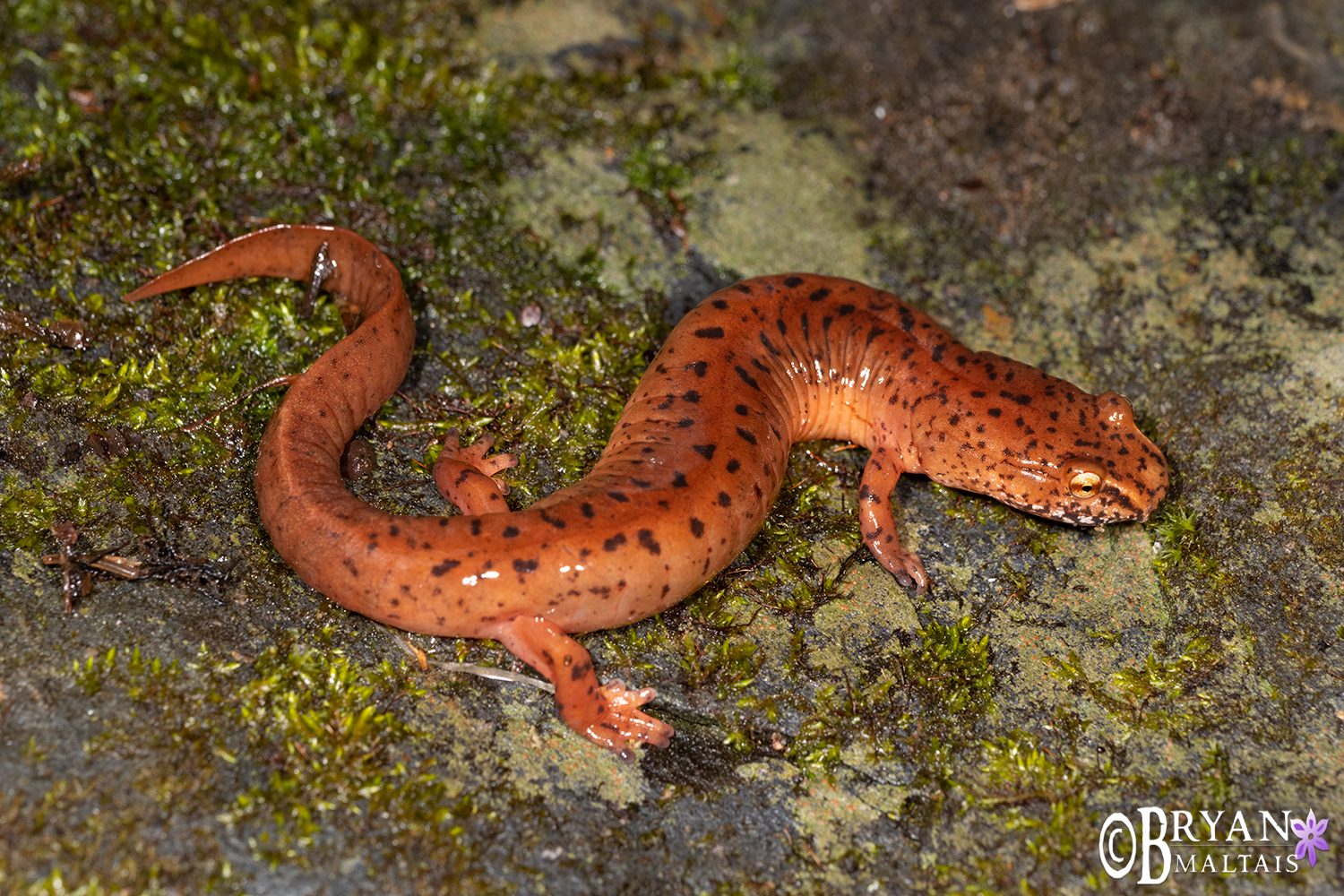
__________________________________________________________________________________________________________
Queen Snake (Regina septemvittata)
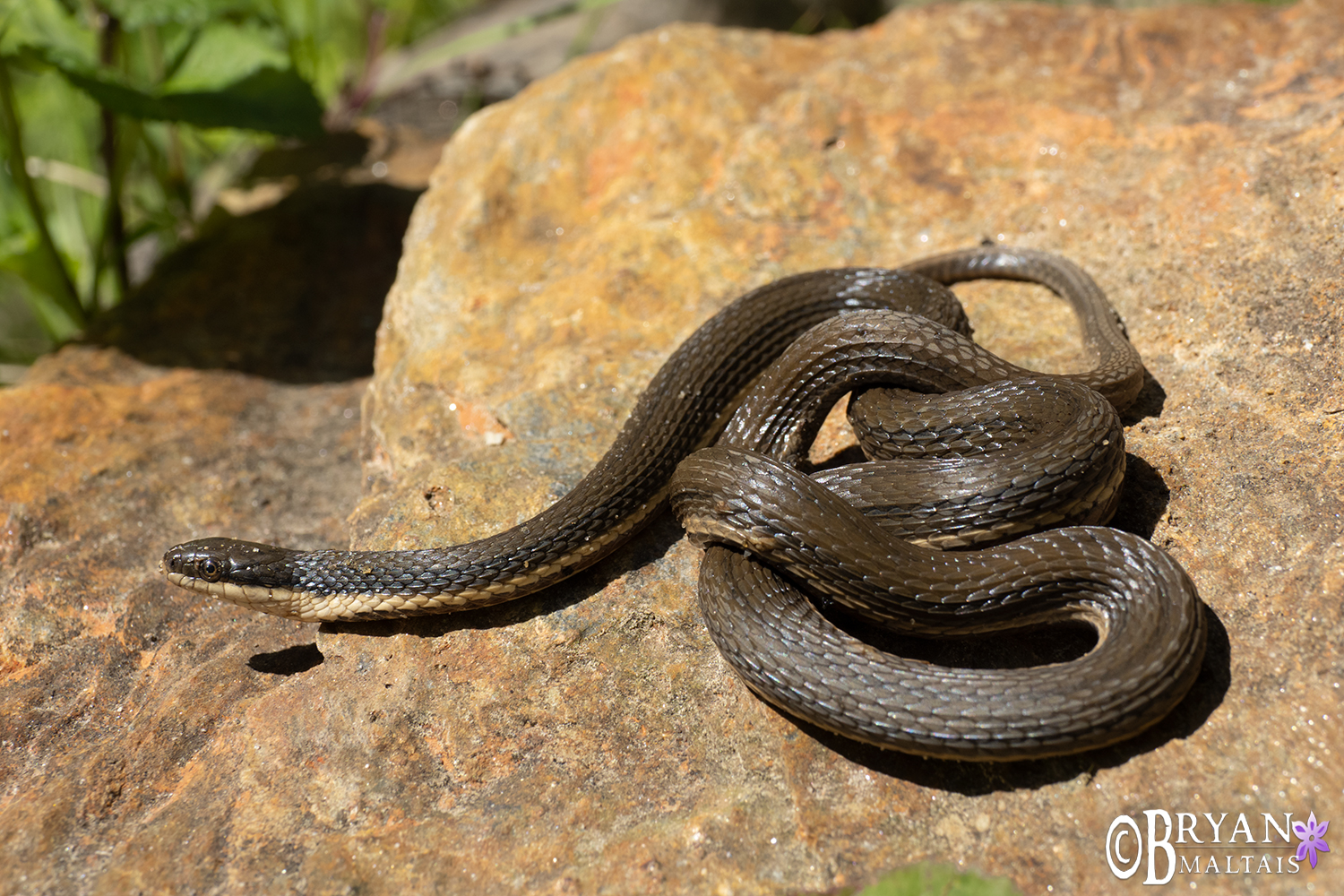
I found Queen Snakes at lower elevations around Asheville. The Queen Snake is an aquatic hunter of freshly molted crayfish who are still too soft to effectively pinch and defend themselves. For this reason, the Queen Snake only lives in clear, rocky streams where such crustaceans can be found. In watersheds where degraded water quality has imperiled crayfish, the Queen Snake likewise dwindles. It locates prey by tasting with its forked tongue underwater and following the scent. The Queen Snake’s eggs hatch inside her and emerge as live young.
__________________________________________________________________________________________________________
Doppelgangers: The Red-cheeked Salamander and the Imitator Salamander
- Jordan’s Salamander aka Red-cheeked Salamander
- Imitator Salamander
This is a textbook case of Batesian Mimicry. The Red-cheeked Salamander, aka Jordan’s Salamander, lives at the highest elevations only within Great Smoky Mountain National Park and nowhere else. Their preferred habitat is Spruce-Fir forest at the mountain tops, which is the coldest and wettest climate inside the park. With such a limited range and specific habitat, it’s classified as Endangered. The colors red, yellow and orange on amphibians are usually aposomatic coloration to warn of their toxicity or bad taste. After a would-be predator tries to eat an aposomatically colored amphibian that has a toxic tatse, he associates the bad experience with the bright warning colors and remembers to never try eating any animal with this color again. Through this adaptation, amphibians with bright colors can often walk around with reduced chance of being eaten. The red jowls of the Jordan’s Salamander indicate that, while not deadly toxic, he tastes bad. As such, most of the forest’s predators have learned to leave cute little salamanders with red cheeks alone. Interestingly, clever animals like Corvids and Racoons sometimes learn to flip the salamanders over and pick their insides out while avoiding the skin.
If you were a defenseless salamander, wouldn’t it be convenient to also have red cheeks to glean the protection that Jordan’s Salamander already had established? Enter the aptly named Imitator Salamander, found in the same forests as Jordan’s Salamander. By possessing red cheeks like Jordan’s Salamander, the non-toxic Imitator Salamander inherits the same protection. Despite the superficial similarity in appearance, the Imitator Salamander (Desmognathus imitator) is in a different genus than Jordan’s Salamander (Plethodon jordani).
Though endangered due to small geographic range, Jordan’s salamanders are locally common, and were staggeringly plentiful. Along one trail, almost every log had several individuals beneath it. I’ve never seen so many salamanders in one forest. I was then lucky enough to find an Imitator Salamander beneath a rock in a stream for comparison. It was fascinating to observe this example of Batesian Mimicry in nature!
A threat to both species’ existence is habitat upslope shifting. It’s a phenomenon being observed in montane ecosystems around the world by which, as the local climate warms, the plant and animal communities shift their range ever upward, replacing those above them. Eventually it becomes too warm and dry for the topmost ecosystem to exist and it gets replaced. On mountains, the environment changes as you gain elevation because it typically becomes both colder and wetter. In the Smoky Mountains, Pine forest typically grows at the mountain base, followed by Oak-Hickory at mid elevation, then Northern Hardwood, and finally Spruce-Fir forest at the peak. The way in which the habitat changes with elevation is like traveling further north; the Spruce-Fir forest at the top of the Smoky Mountains is the same forest found at low elevations in Canada. If the climate in the Smoky Mountains warms, the Northern Hardwood forest would gradually shift upward until it replaced the Spruce-Fir forest, thereby vanquishing the preferred habitat of these Salamanders. In the Rocky Mountains, Alps and other mountain ranges, treeline has shifted upwards by as much as 150 m, replacing the arctic tundra zone as it advances. This effect is thankfully still minimal in the Smoky Mountains.
The Spruce-fir forest already suffered a heavy reduction after the Balsam Woolly Adelgid plague. This tree pest is an insect that was accidentally introduced from Europe in 1957 and killed 70% of mature Firs. The insects have since abated and the trees recovered. However, should the trees become stressed by a warmer and dryer climate, there could be another Adelgid reoccurrence.
__________________________________________________________________________________________________________
Common Watersnake (Nerodia sipedon)
The Common Watersnake is indeed ubiquitous within its vast range from Maine to Colorado, and the Gulf Coast to Canada. They’re unselective in habitat, living around stagnant ponds, fast flowing rivers, and all habitats in between. Like most herps, they opportunistically eat anything that fits in their mouth. However, with the specialized ability to swim and hunt underwater, they concentrate on capturing small fish, amphibians and crayfish. Like humans, their temperament varies. I’ve met some that are wildly aggressive and relentlessly try to escape, and others that allow me to pose them on rocks in front of pretty rivers just hoping that I’ll eventually leave. Like most Colubrid snakes they usually emit musk when caught, which is a putrid liquid combined with excrement that makes them smell unpalatable. They can also mimic venomous pit vipers by flattening their head into a diamond shape when frightened. This behavior often gets them killed by humans. 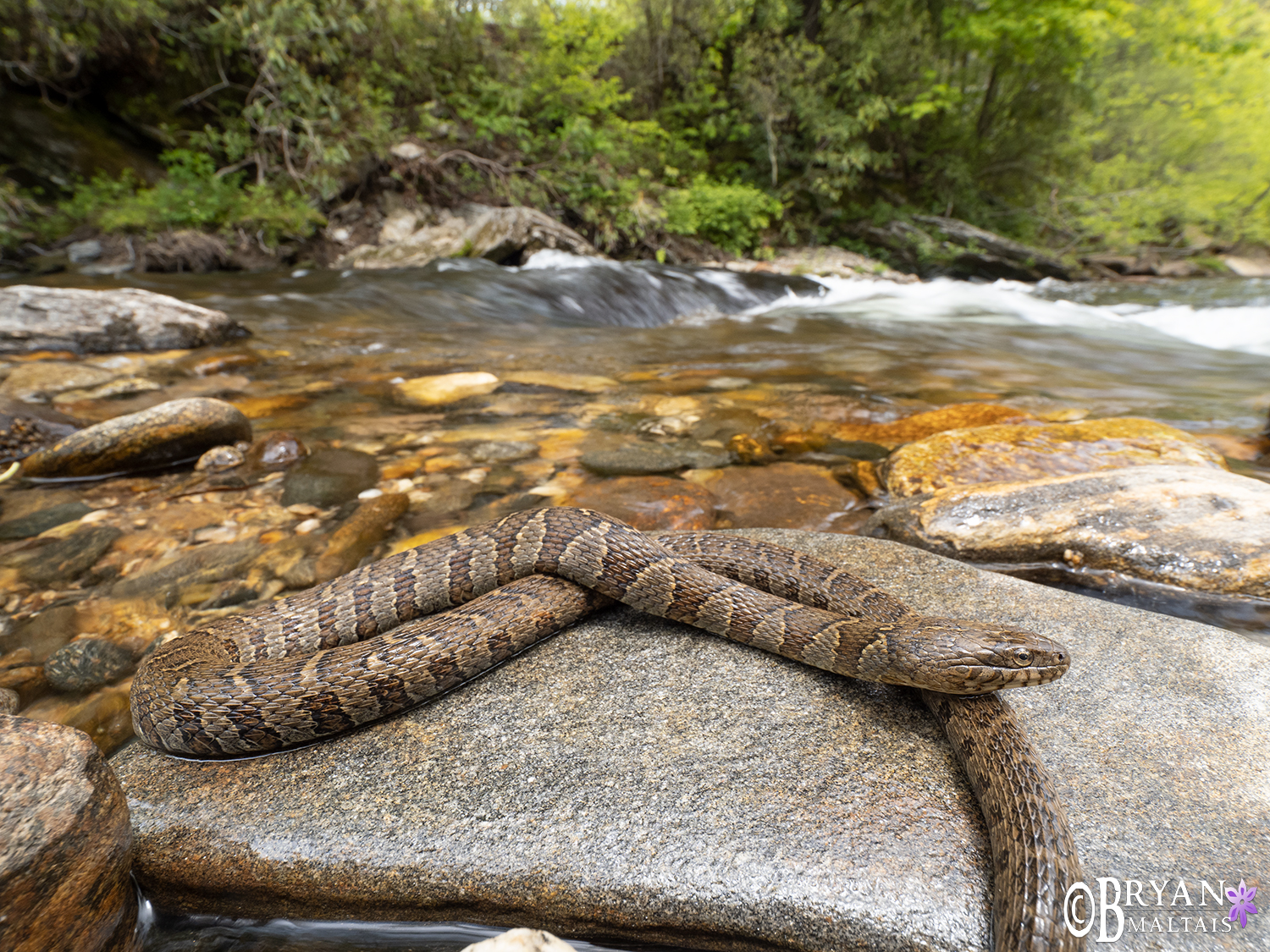
__________________________________________________________________________________________________________
Blue-Ridge Two-Lined Salamander (Eurycea wilderae)
This species was fairly common throughout my trip at all elevations and forest types. I found them in tiny seepages and along rivers alike. Though normally found stream-side, I found one individual in GSMNP about 1/4 mile from the nearest stream. Among my most treasured finds was a female guarding her clutch of eggs.
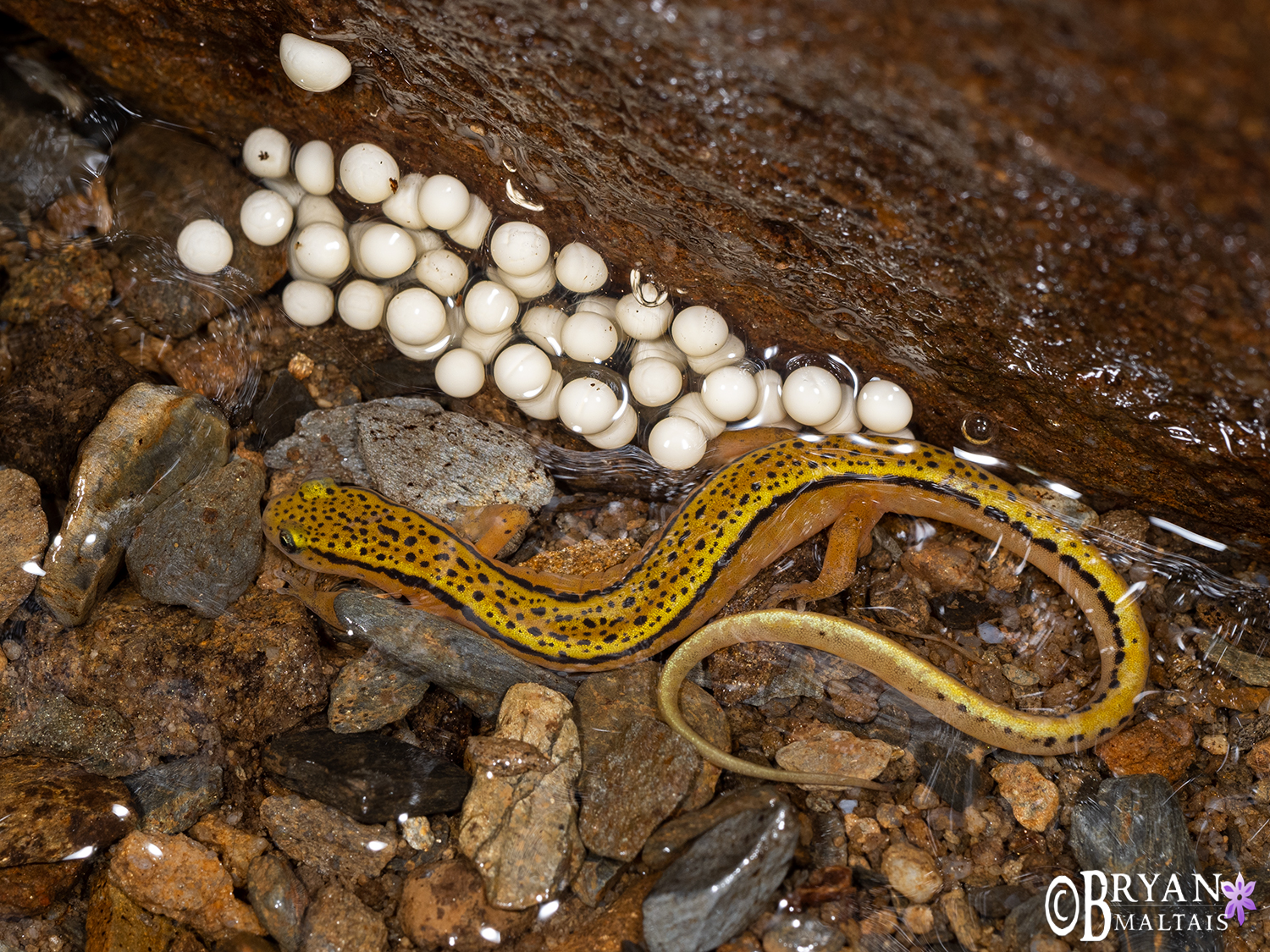
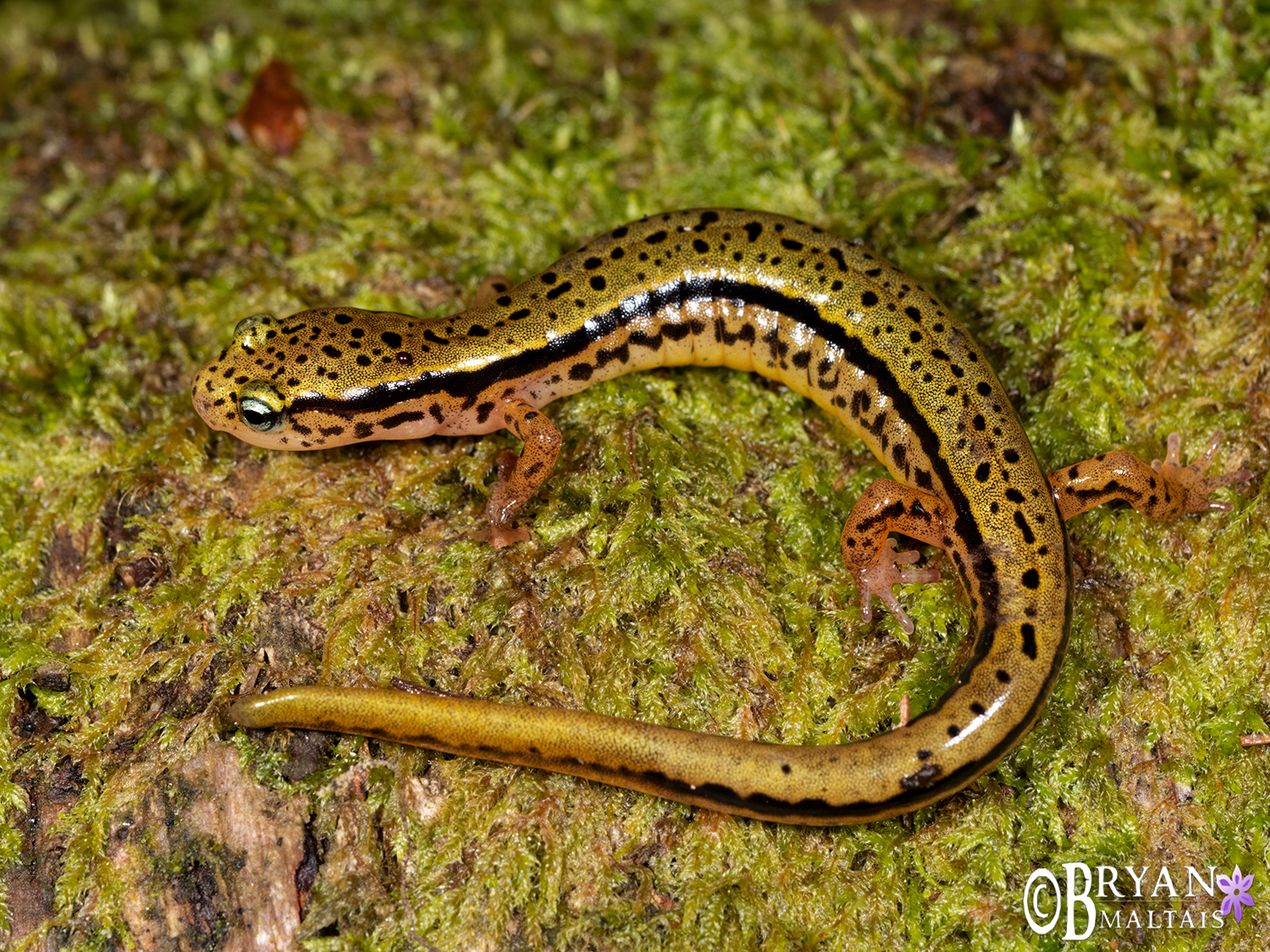 __________________________________________________________________________________________________________
__________________________________________________________________________________________________________
 Three-lined Salamander (Eurycea guttolineata)
Three-lined Salamander (Eurycea guttolineata)
The so called “brook salamanders” in the genus Eurycea such as the Two-lined salamander above are usually small and dainty with lengths averaging only 4.5″. The Three-lined Salamander is a giant among its kind at almost 8″, though still svelte in build. These were common at lower elevations along rivers. I love their attractive pattern with butterscotch coloring.
__________________________________________________________________________________________________________
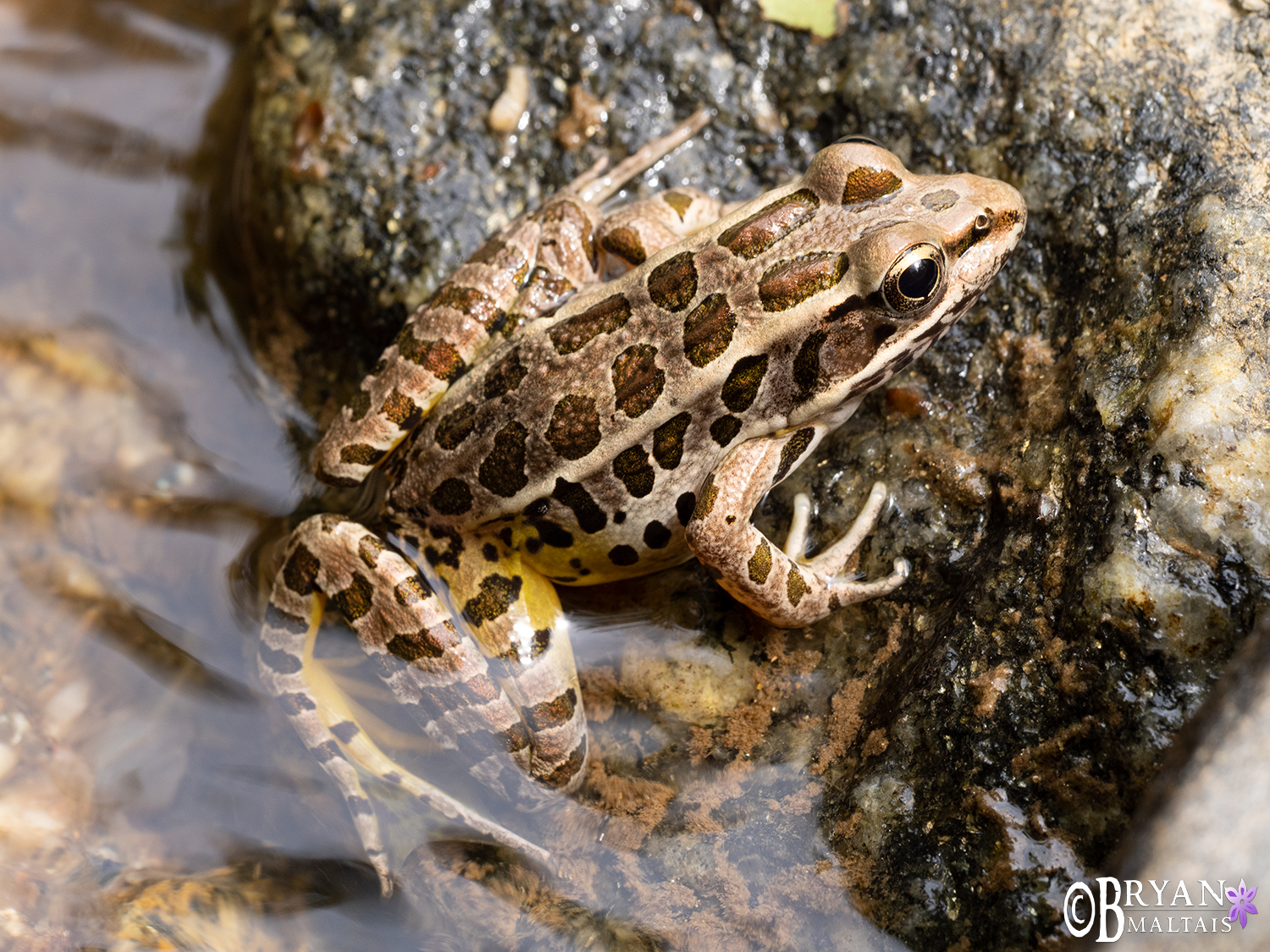
The Pickerel Frog (Lithobates palustris). Many amphibians have toxins in their skin secretions that range from a mild bitter taste to deadly poisonous when ingested. The distinguished pattern and yellow thighs of the Pickerel Frog denote that it is squarely poisonous if eaten.
Are North Carolina’s Salamanders safe?
With such a high biodiversity of salamanders concentrated in such a small area, many of which are endemic, this region has a lot to loose. A looming threat making its way across western Europe that could be catastrophic should it jump across the sea is Bsal. The Bsal plague is a type of Chytrid fungus that has already caused local extinctions of the Fire Salamander, western Europe’s only salamander. Bsal first arrived in Europe from Asia by way of newts imported for the pet trade. When Asian newts were released into the environment, they infected Fire Salamanders with Bsal. Soon thereafter, the Fire Salamander became extinct in Belgium and the Netherlands. Bsal then spread into Germany where it exterminated Fire Salamanders in the Eiffel Forest, and now continues to spread. If Bsal were to make it to the Smoky Mountains, it could potentially wipe out salamander species that live nowhere else. The situation is being closely monitored, and the US Fish & Wildlife Service has banned imports of amphibians. Bsal is a fungus that embeds on the skin of salamanders. It causes an autoimmune response that destroys the salamanders’ skin. Most Salamanders seem to have little or no natural resistance to Bsal. Once it enters an environment it’s usually too late for them. Bsal is native to southern Asia where its continuous presence caused native salamanders to develop natural defenses against. Salamanders elsewhere in the world had no chance to adapt to Bsal, and readily die when exposed to it.
The Plethodontids
Salamanders in the genus Plethodon are called the woodland salamanders. Unlike other common North American genera such as Ambystoma, Eurycea and Desmognathus, the Plethodontids are completely terrestrial and don’t require water for any part of their development. They lay eggs on land within damp hiding spots. The young salamanders hatch minuscule in size and fully developed without having to go through an aquatic larval stage. The Red-cheeked Salamander mentioned above is also a Plethadontid.
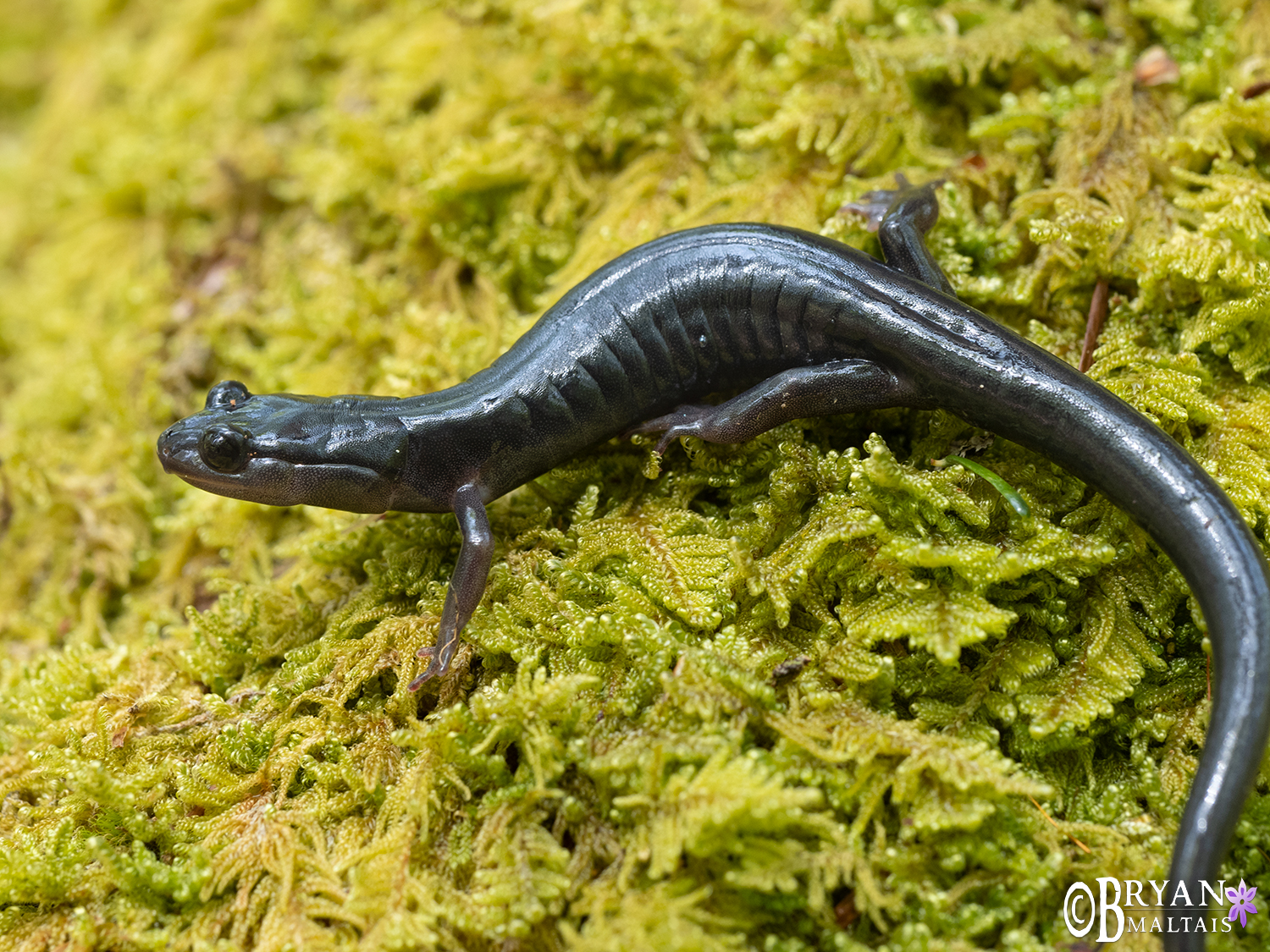
The Southern Gray-cheeked Salamander (Plethodon metcalfi) is listed as Vulnerable because it’s endemic to a very small 52×26 mile area of lowland forest in western North Carolina.
__________________________________________________________________________________________________________
The Desmogs
Salamanders in the genus Desmognathus are called the Dusky Salamanders. Their habitat and natural history are similar to salamanders in the genus Eurycea described above. They live along or not far from cool, moving water. Females brood their eggs beneath streamside rocks. Desmogs are stockier with larger mouths than dainty Eurycea who live in the same streams and may be hunted by dusky salamanders. North Carolina harbors 11 species of Dusky Salamander. A frustrating characteristic is that some look so similar they can’t be distinguished without surgical scrutiny or genetic testing.
- Seal Salamander beside its rocky river habitat
- This was an enormous 8″ Black-bellied Salalamnder found in a tiny trickle in the Fir forest at the top of GSMNP
- Seal Salamander
- Ocoee Salamander
- The small Ocoee Salamander inhabits tiny streams to the the sides of big rivers.
- A young Black-bellied Salamander
__________________________________________________________________________________________________________

